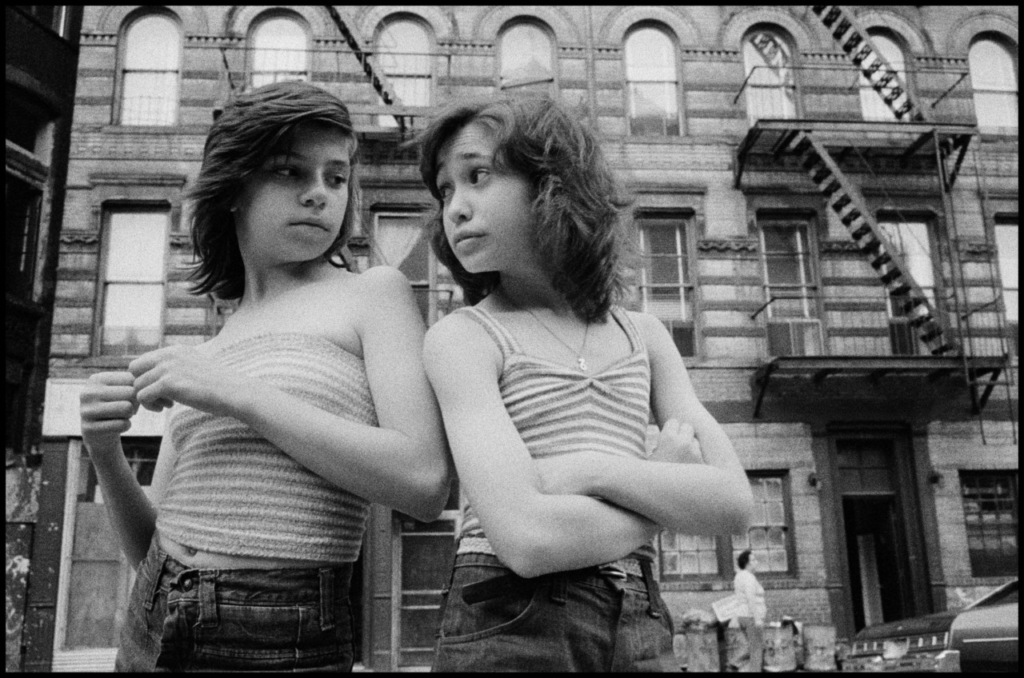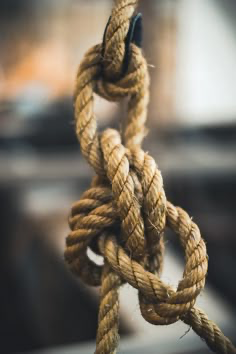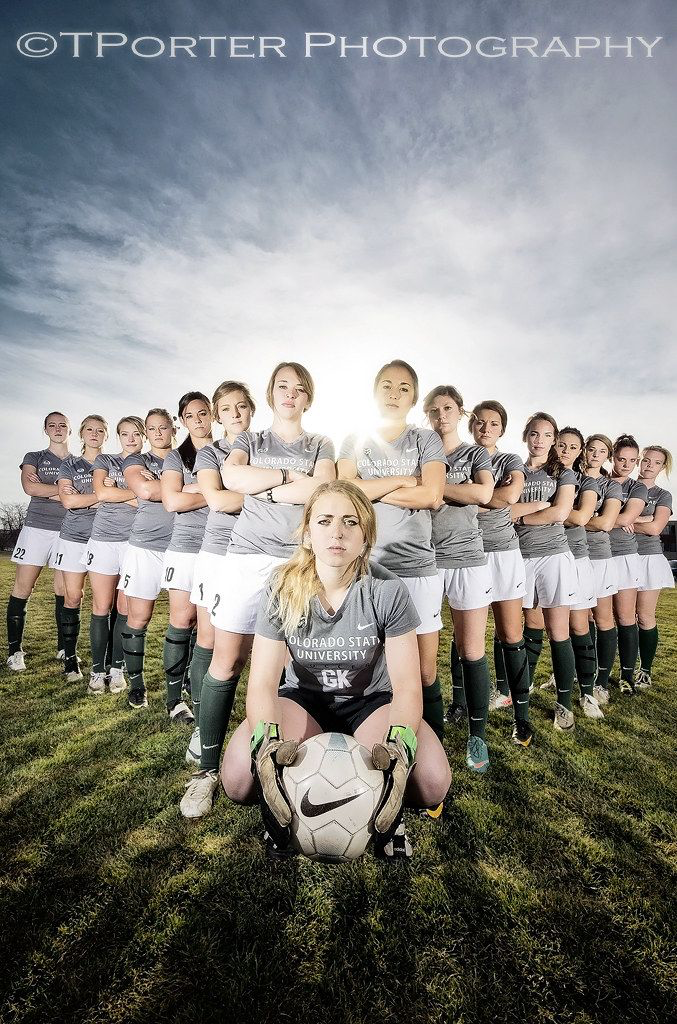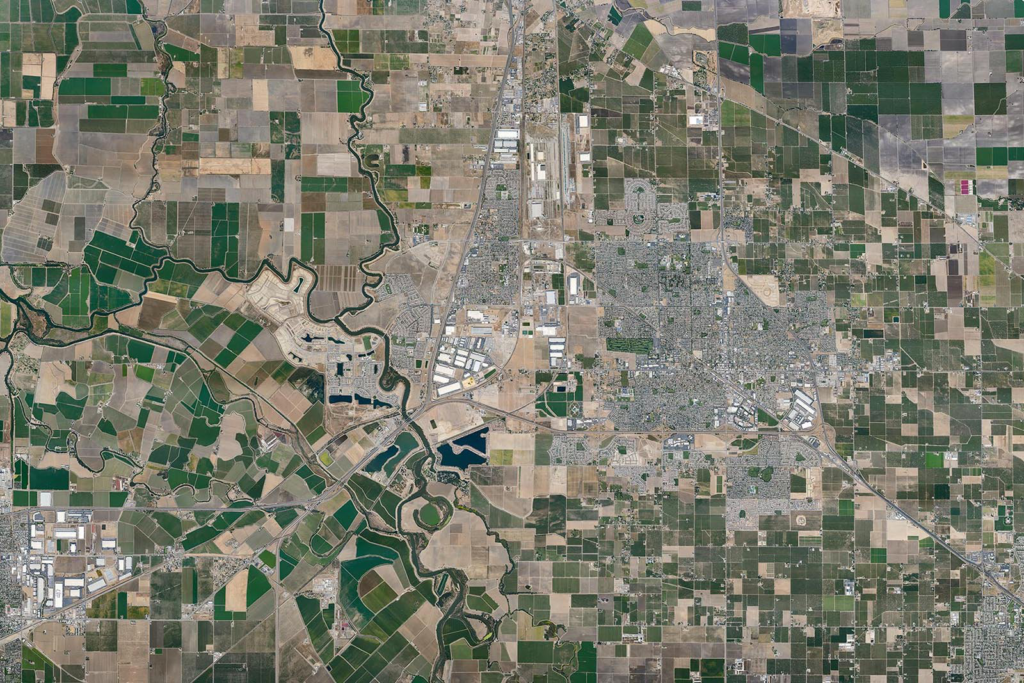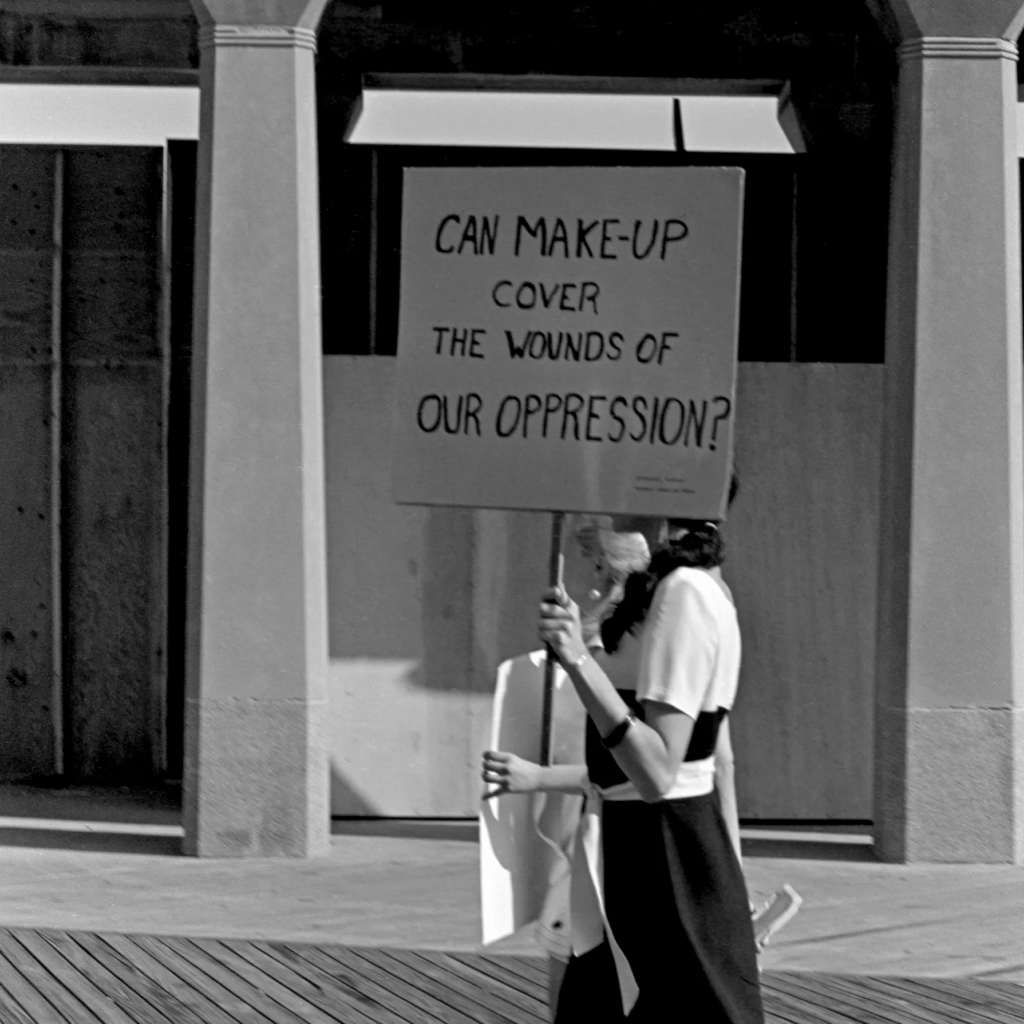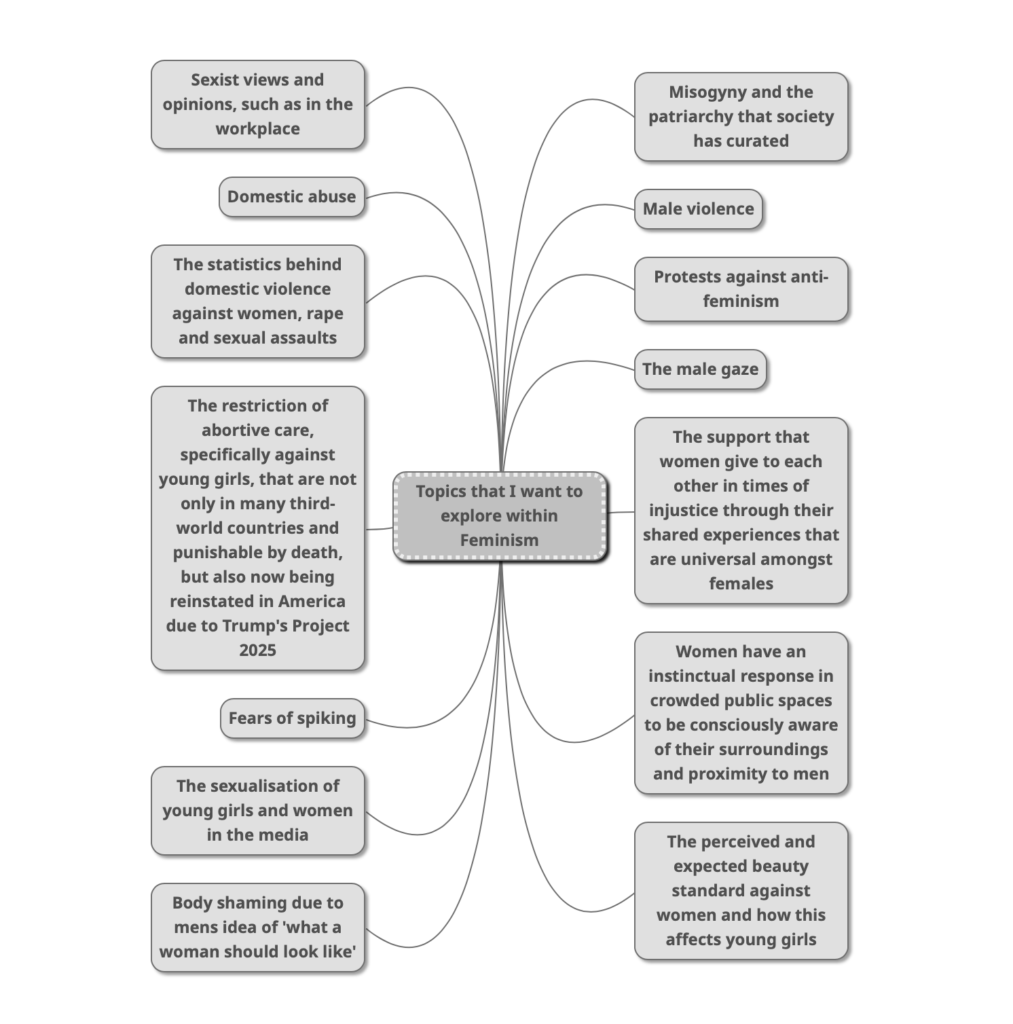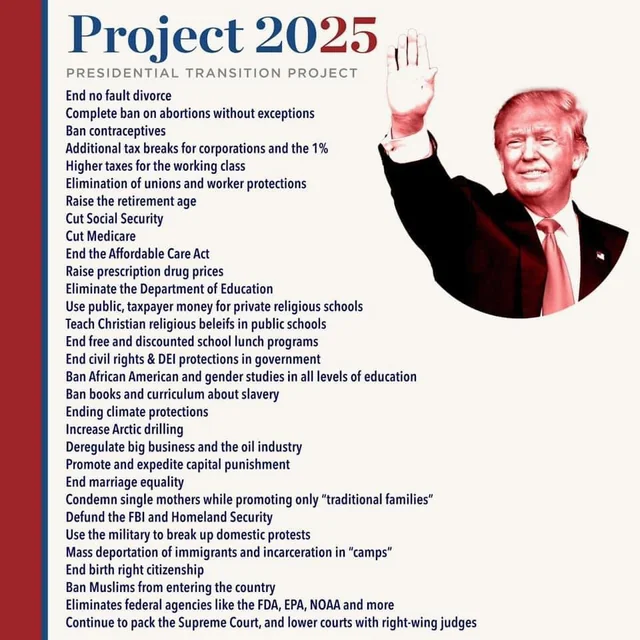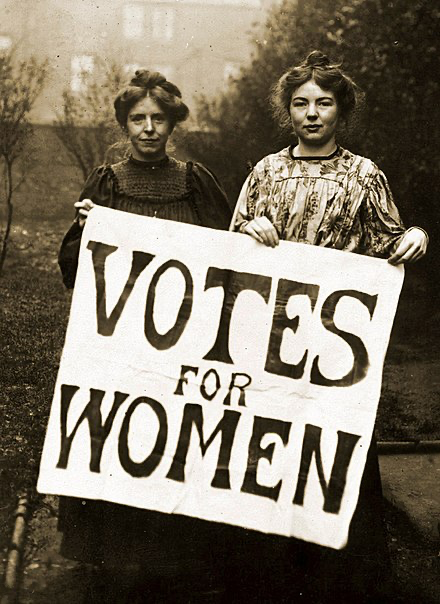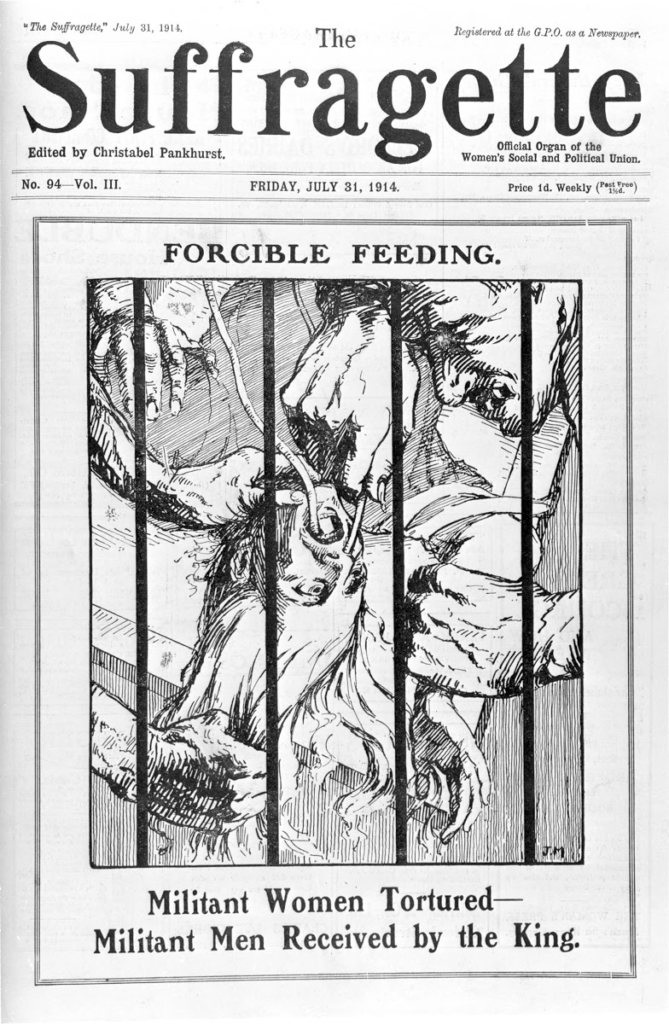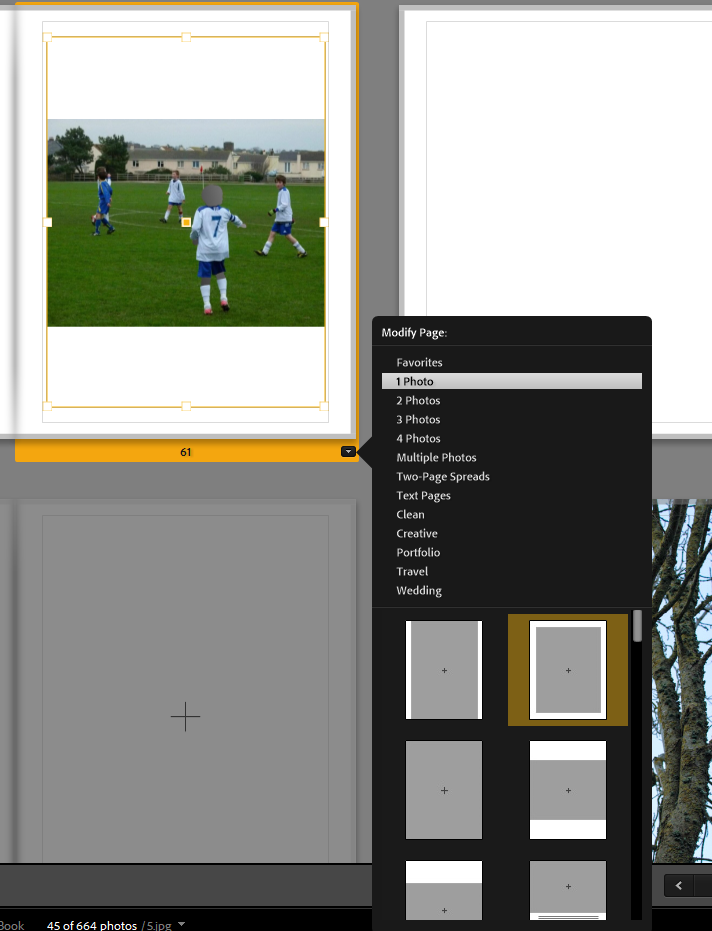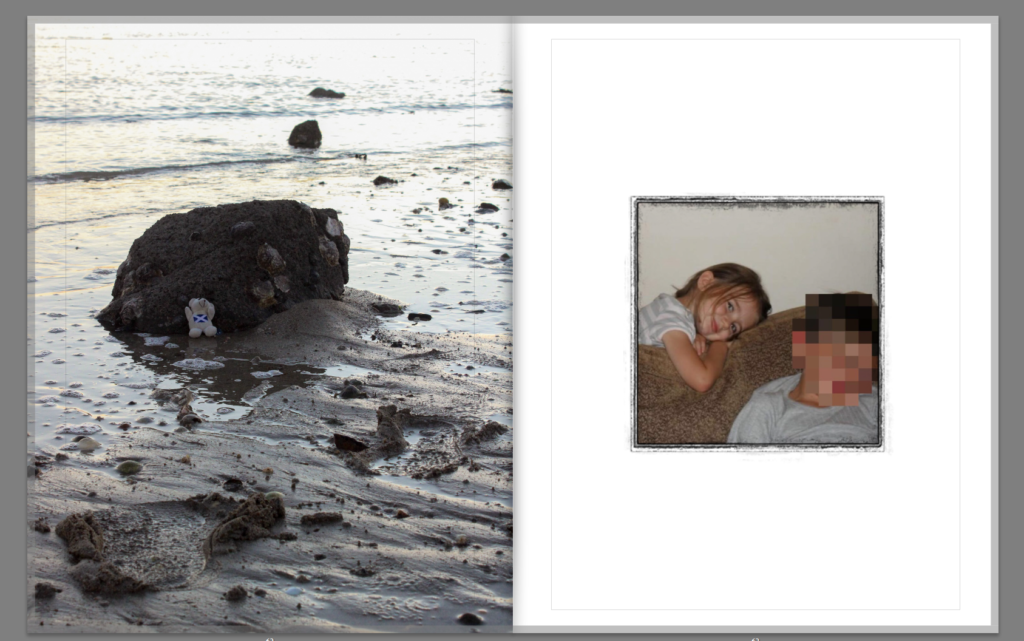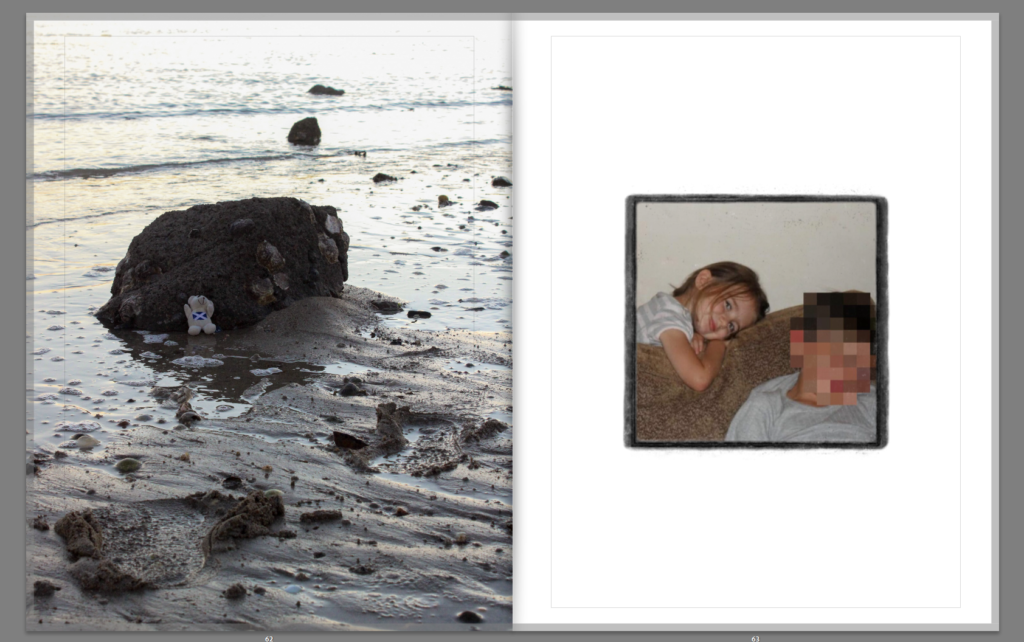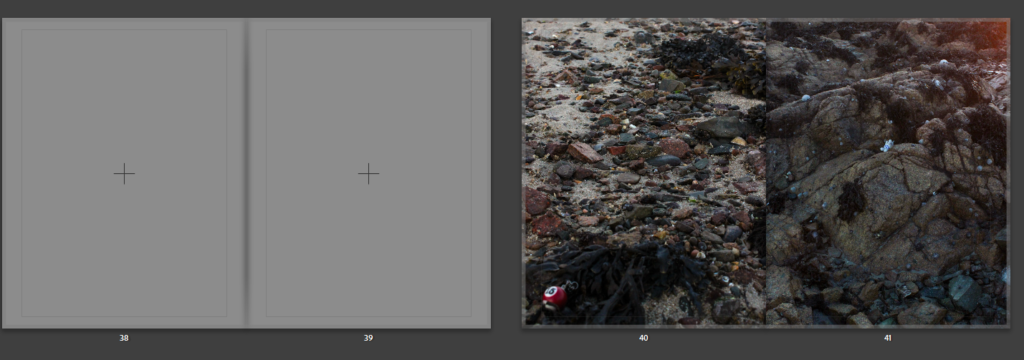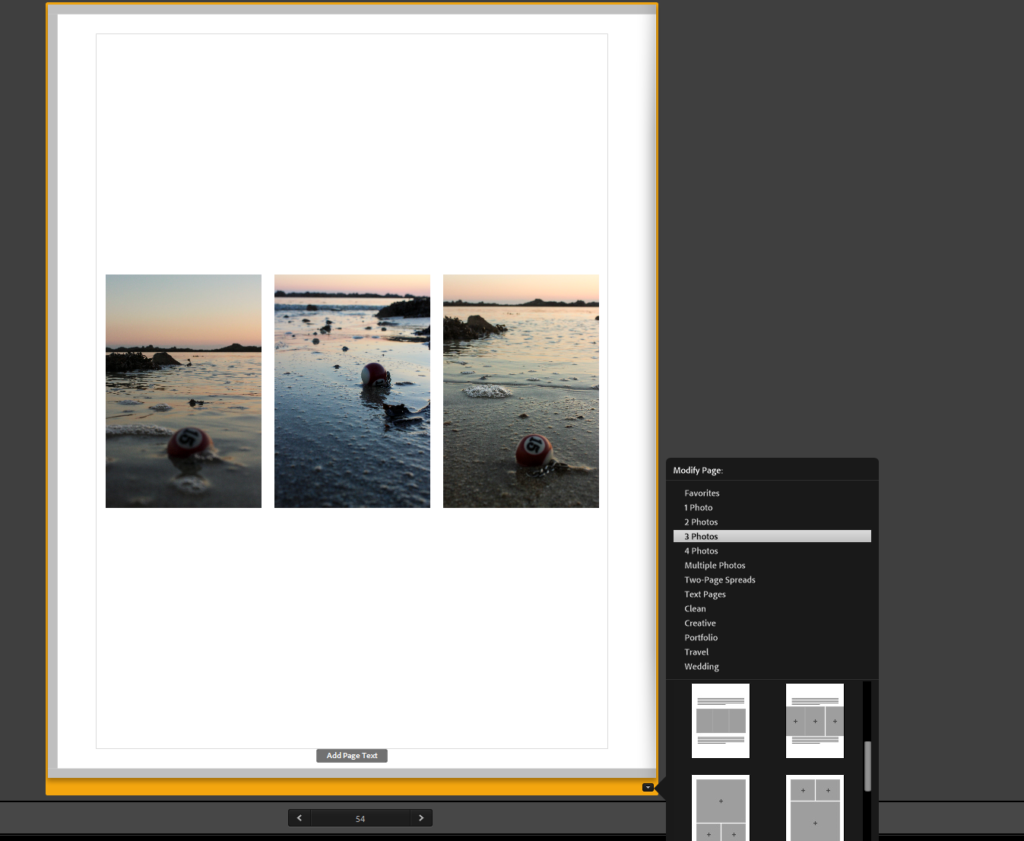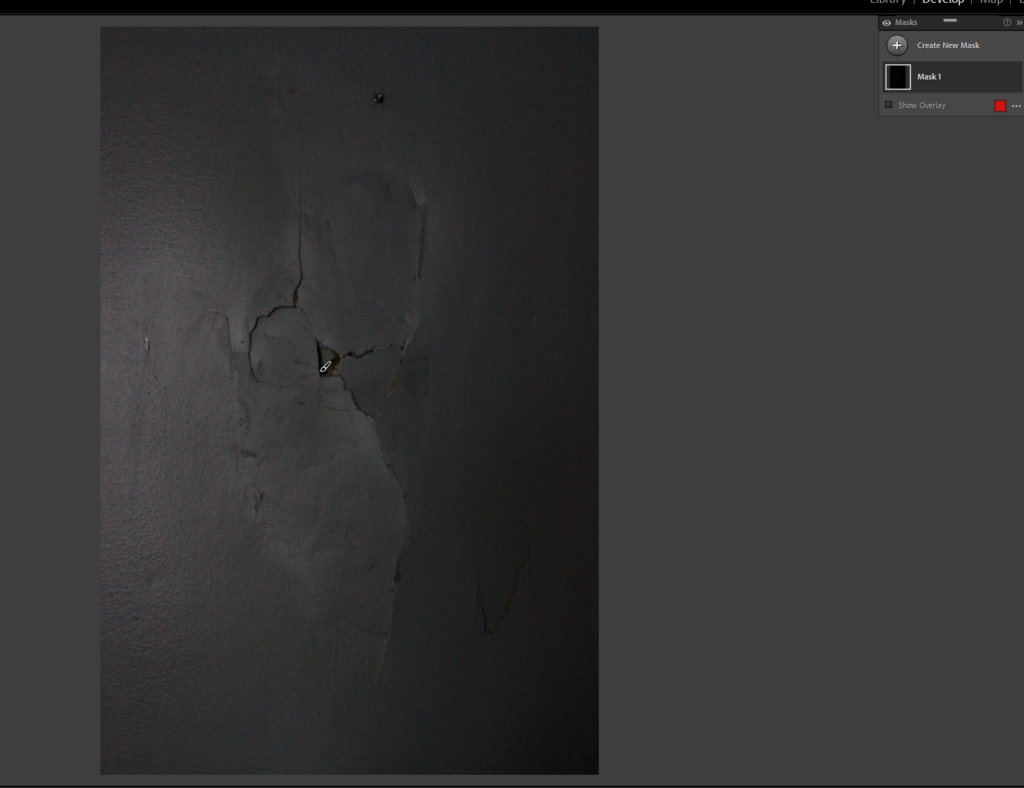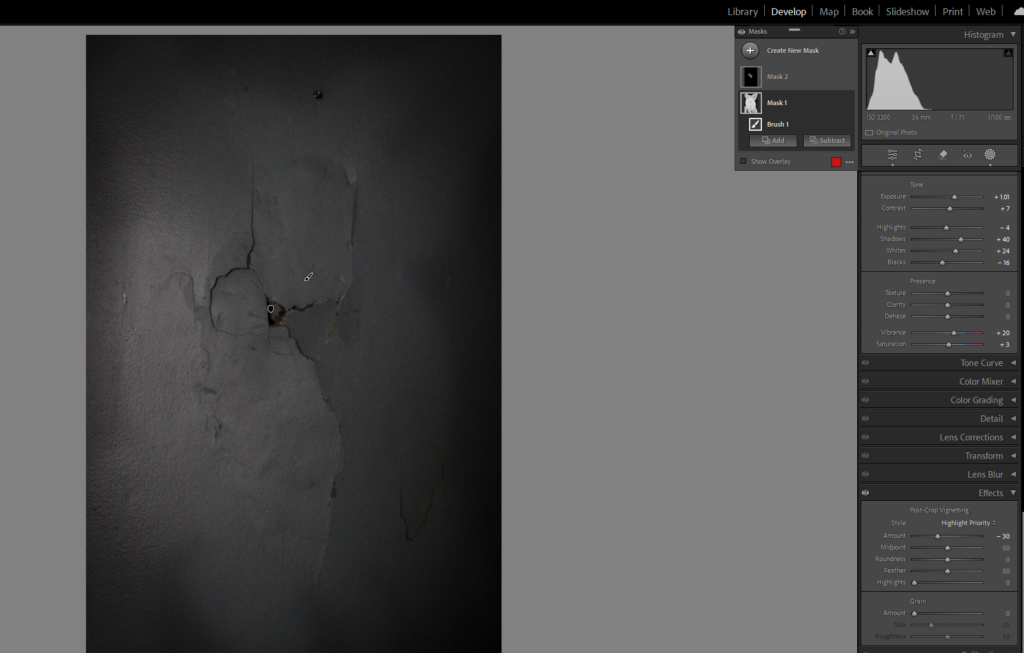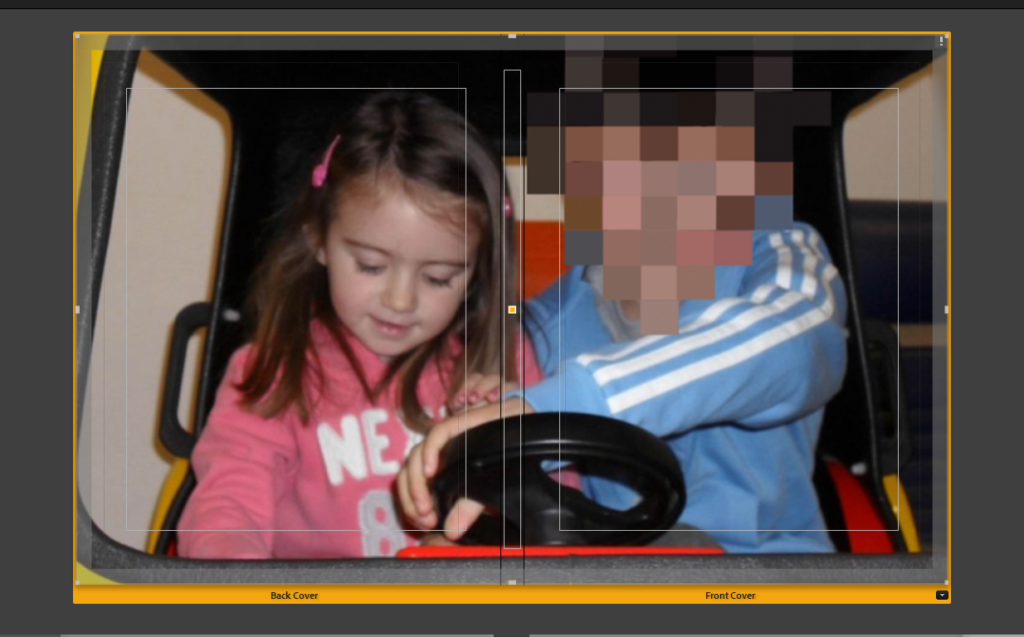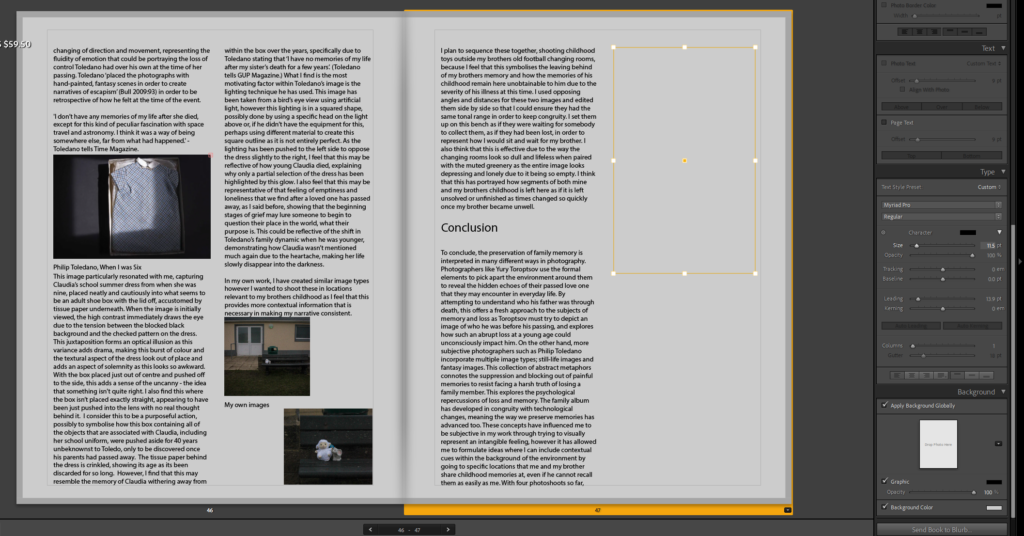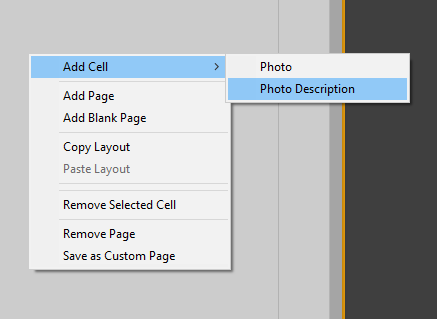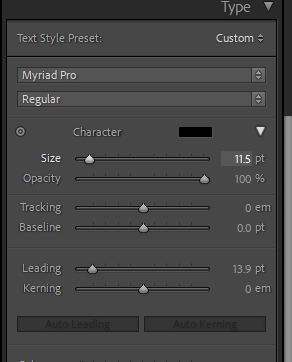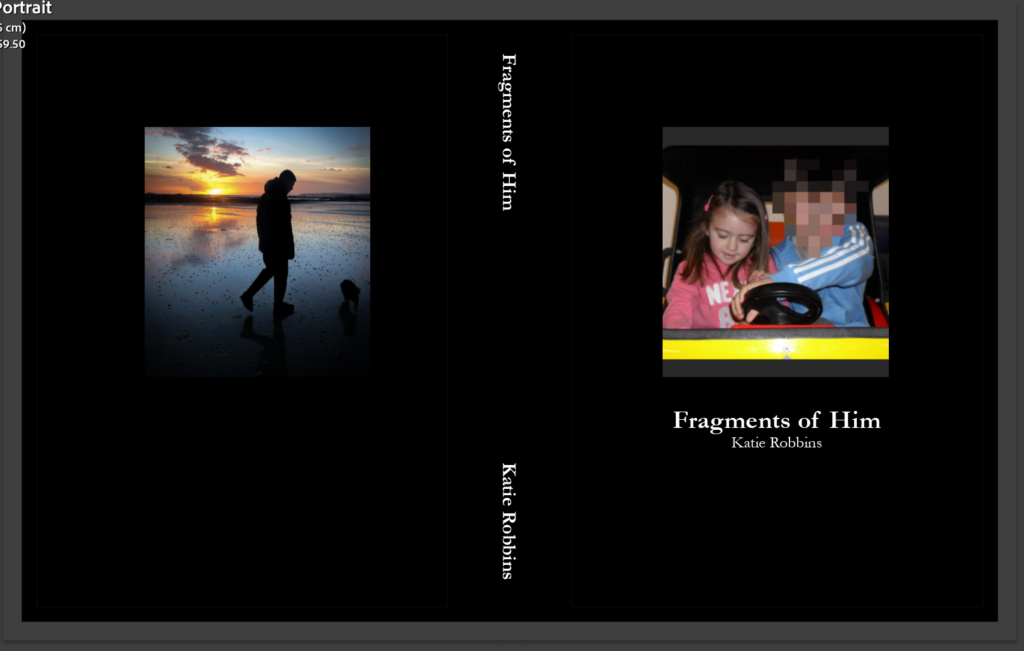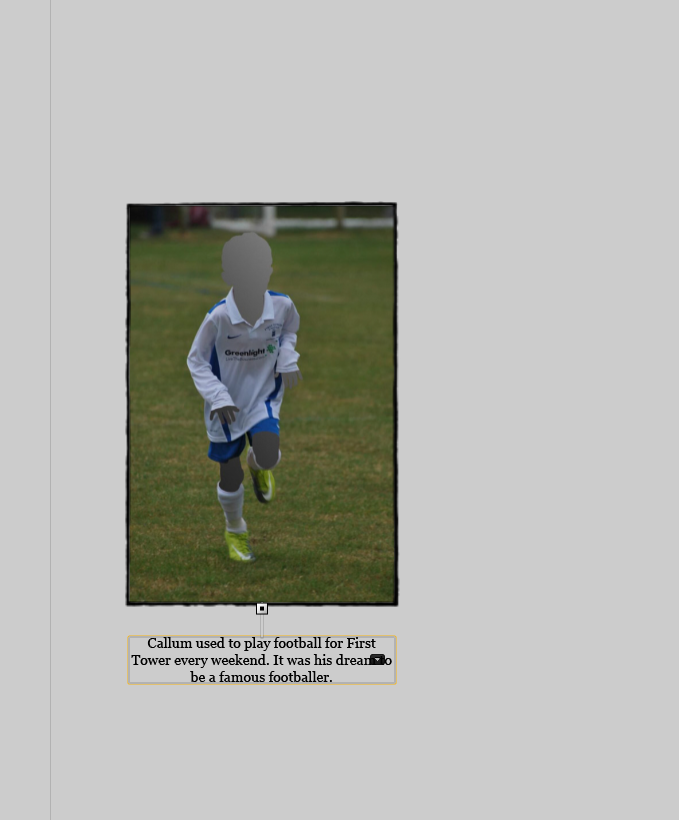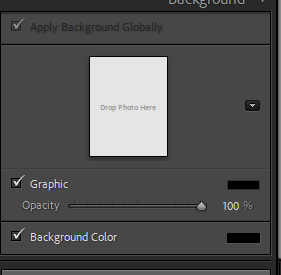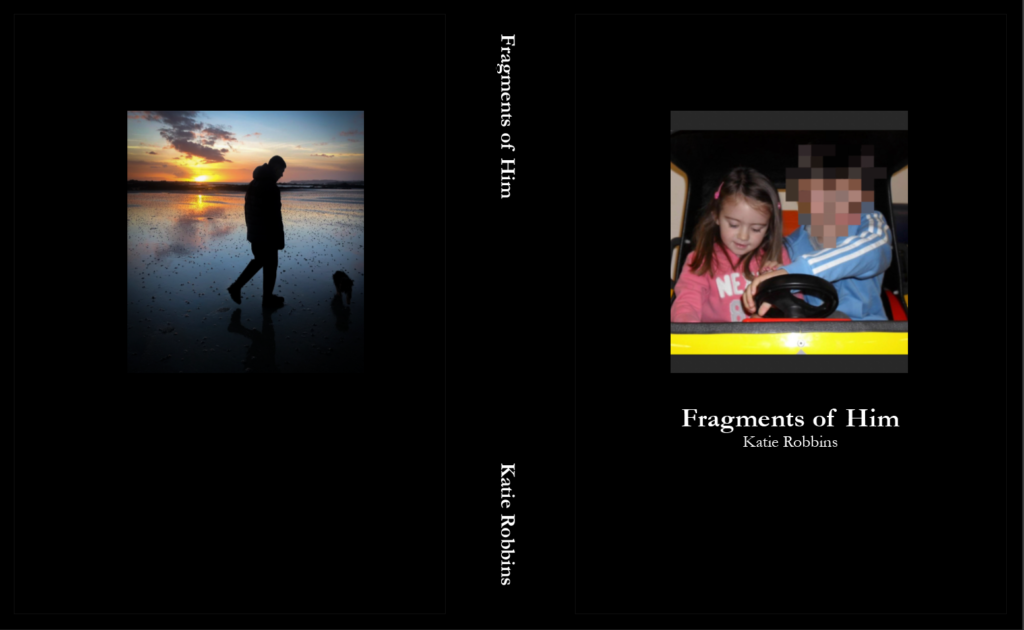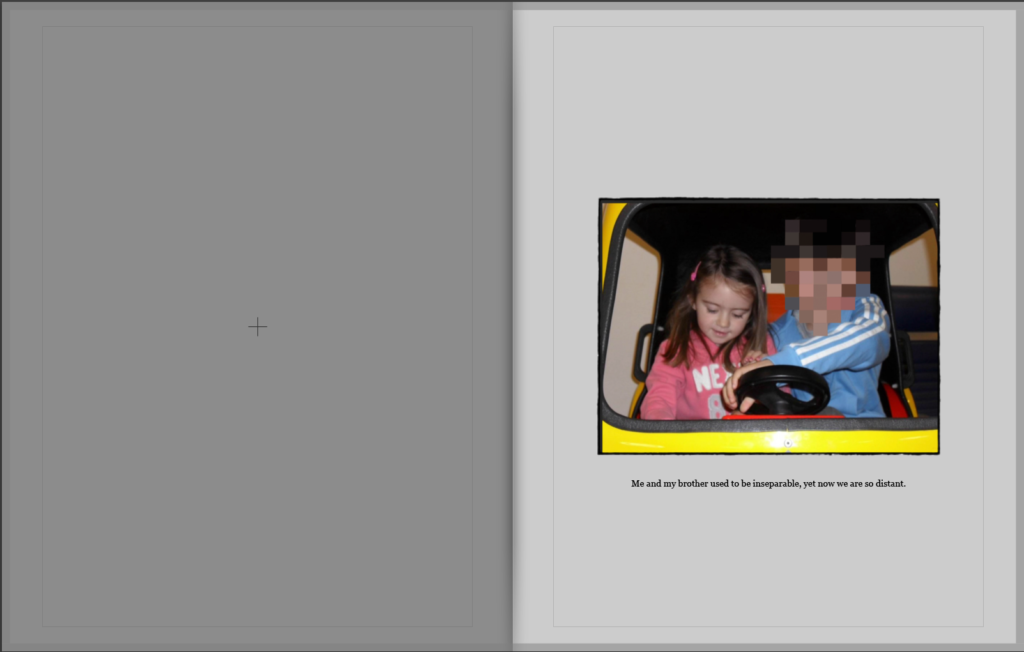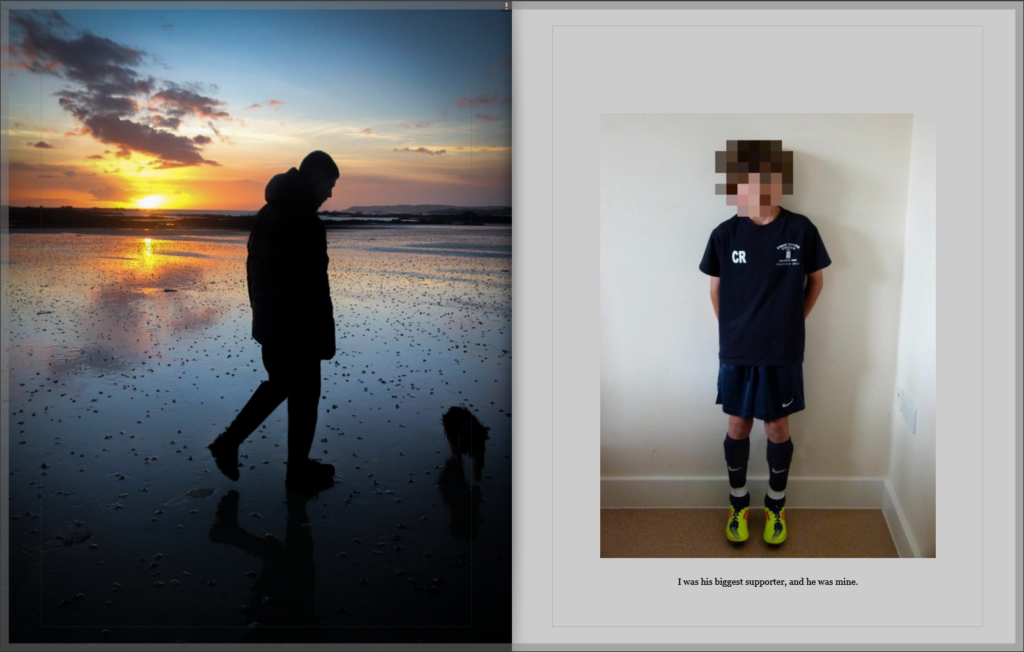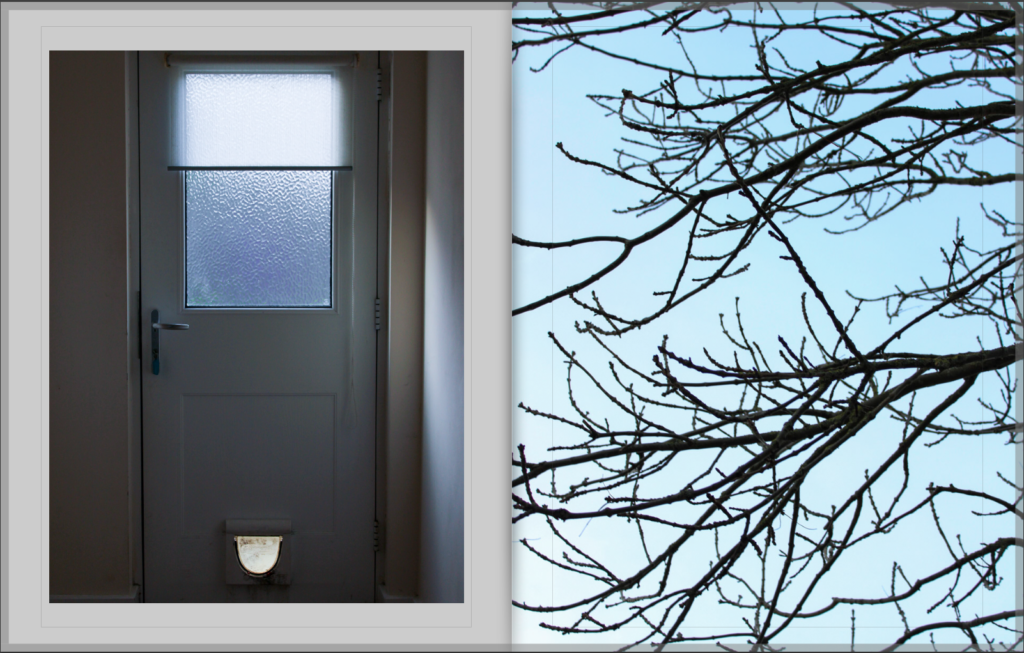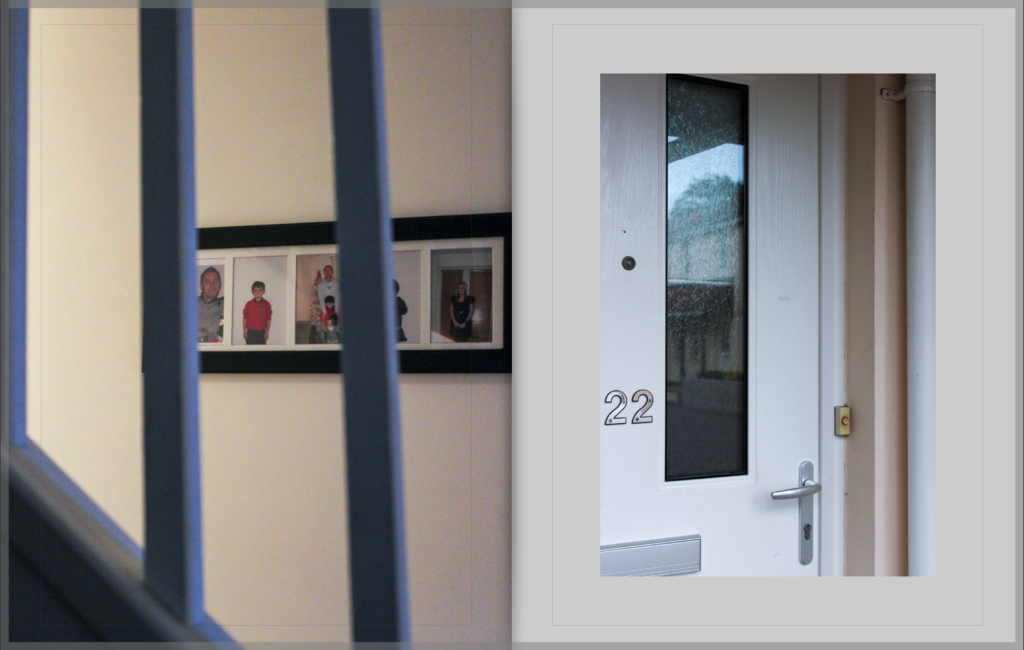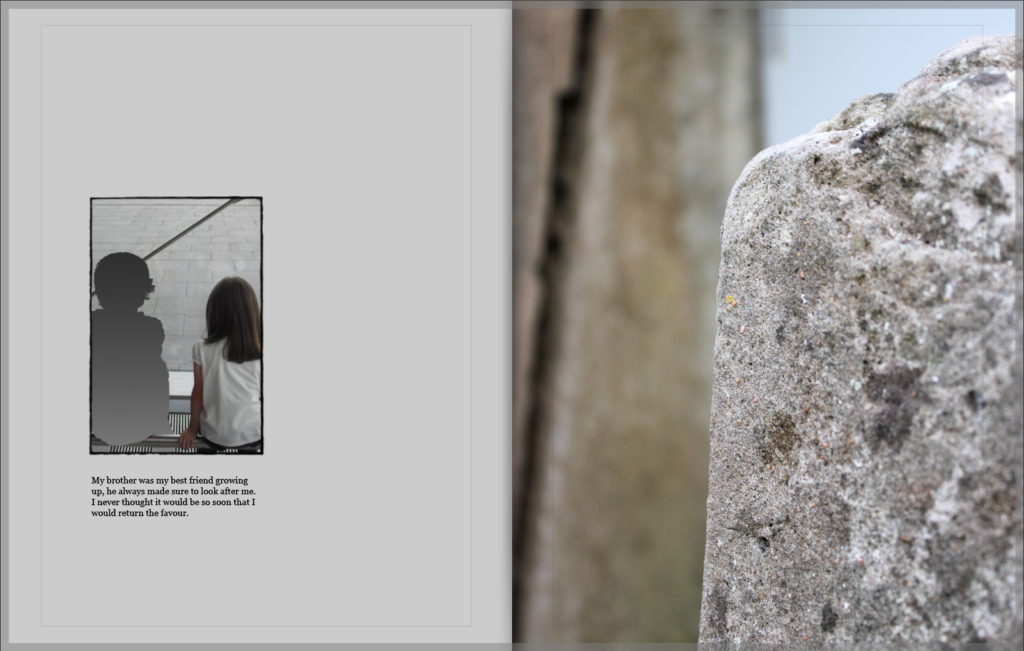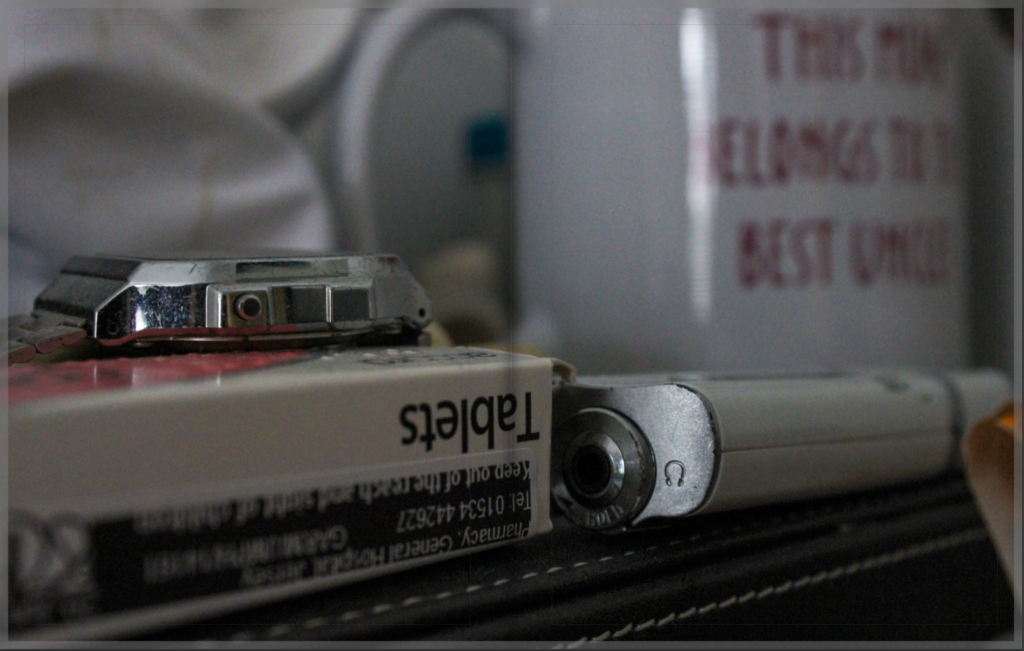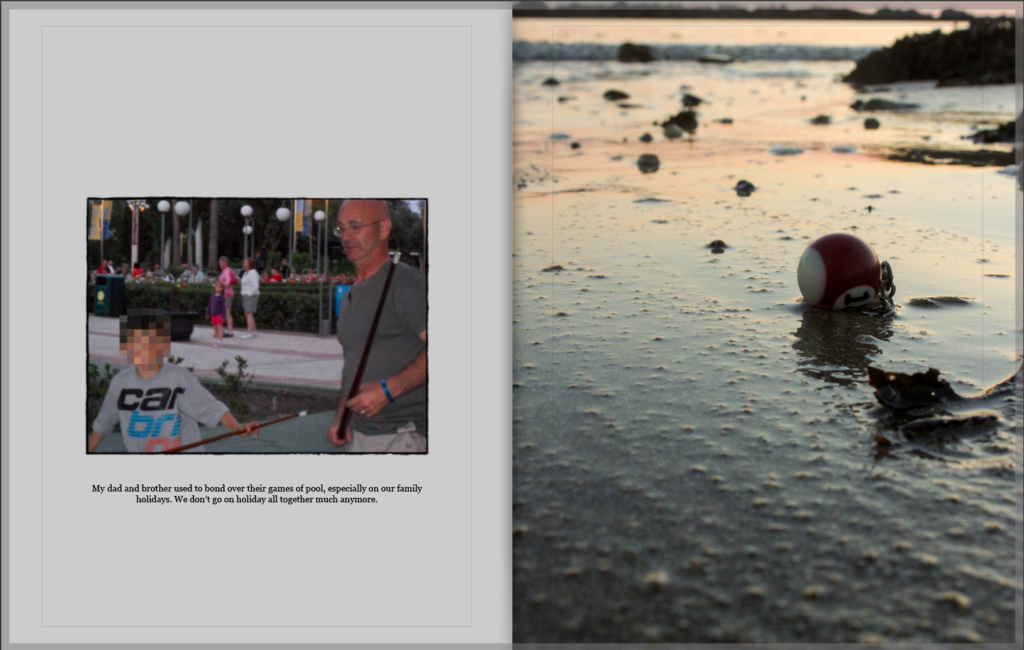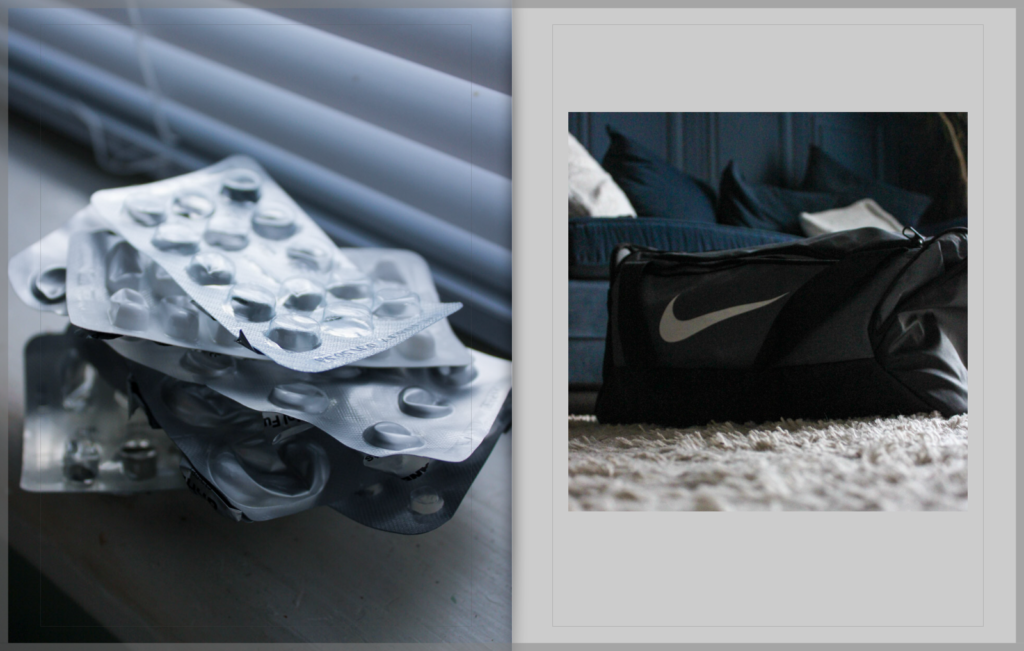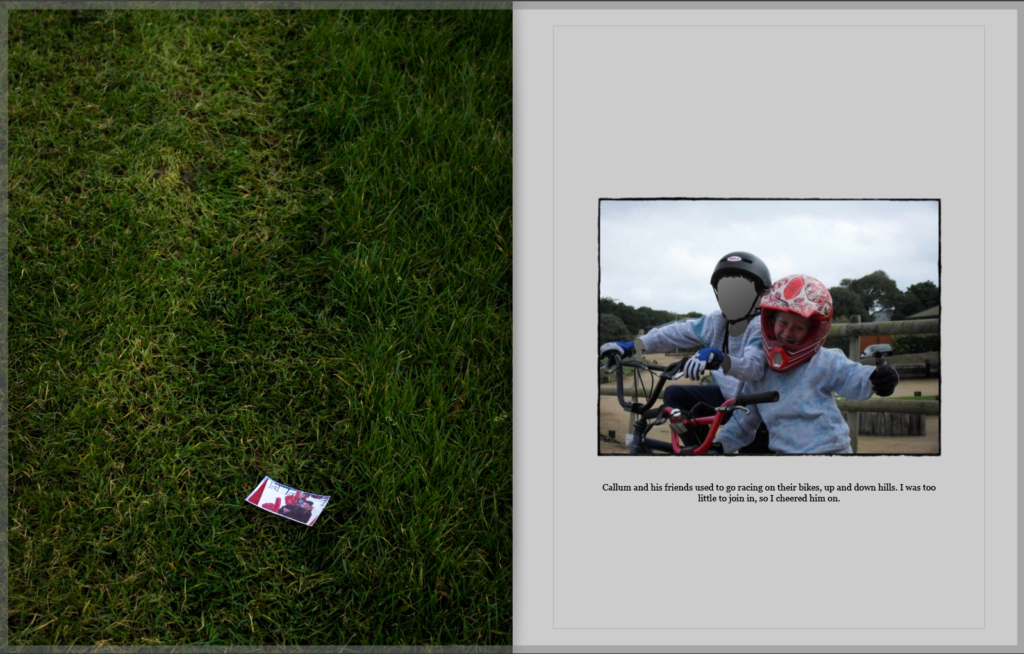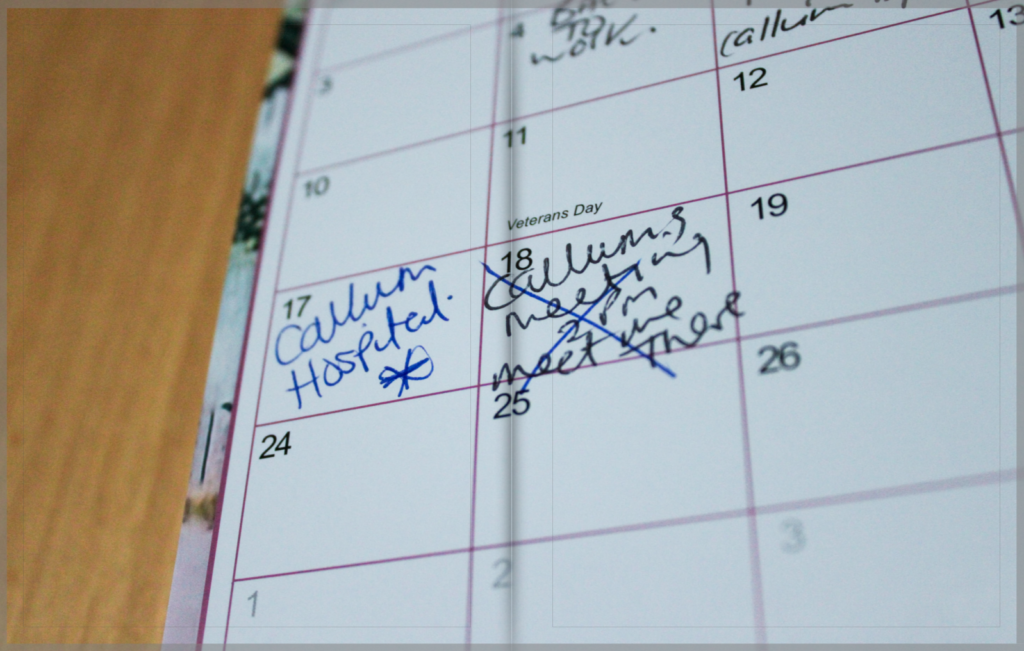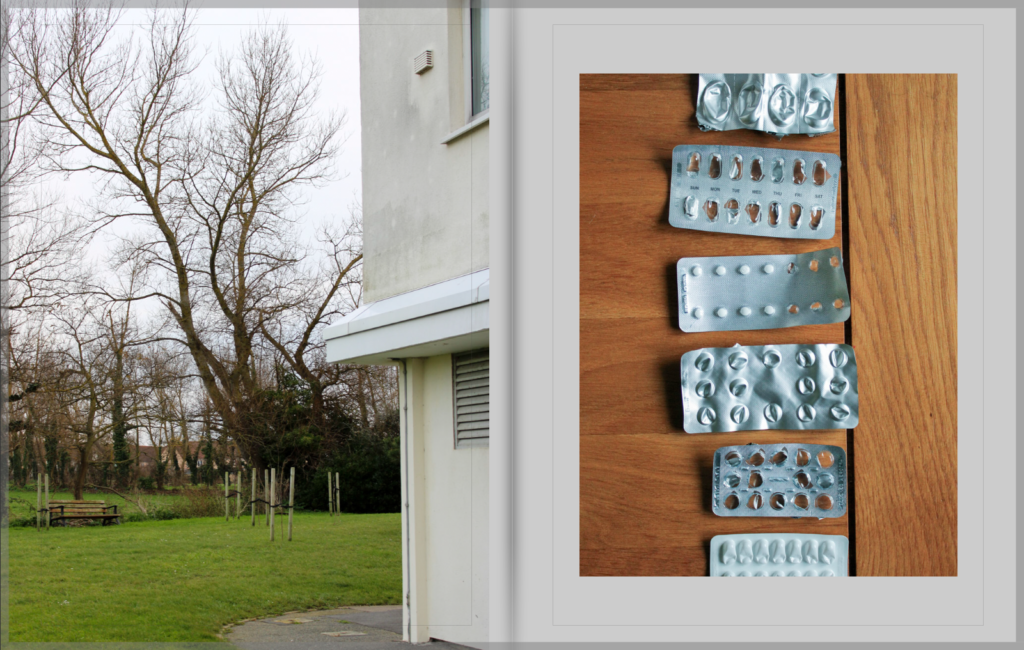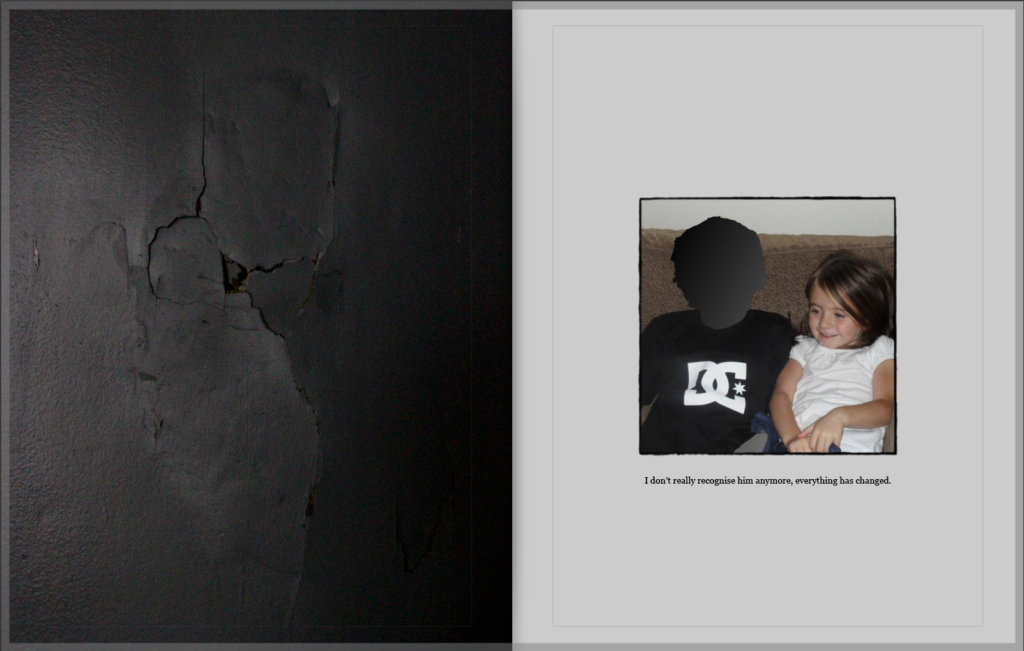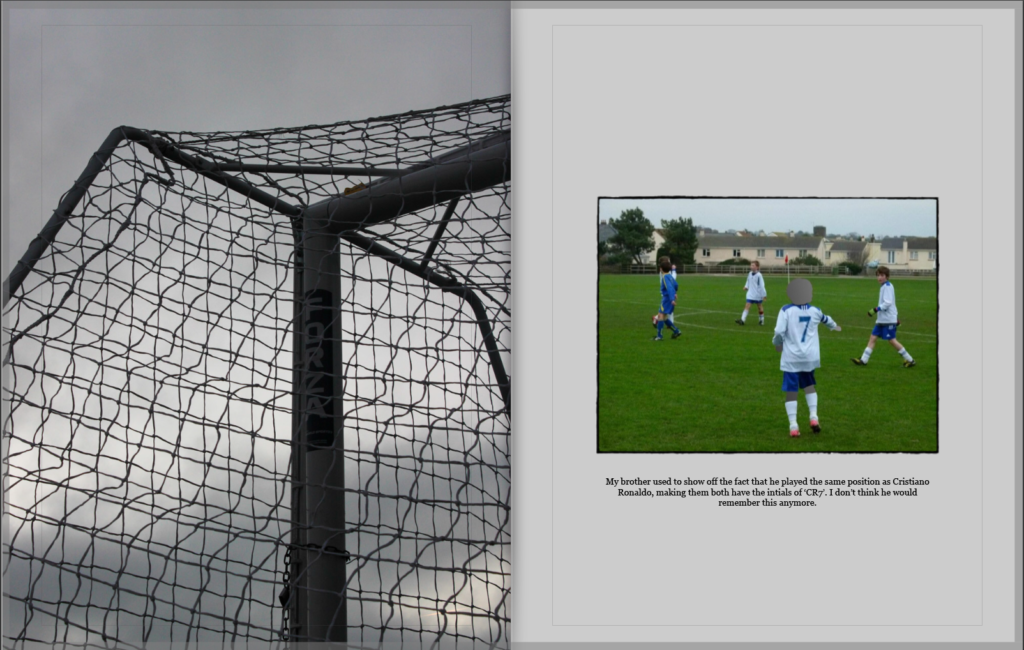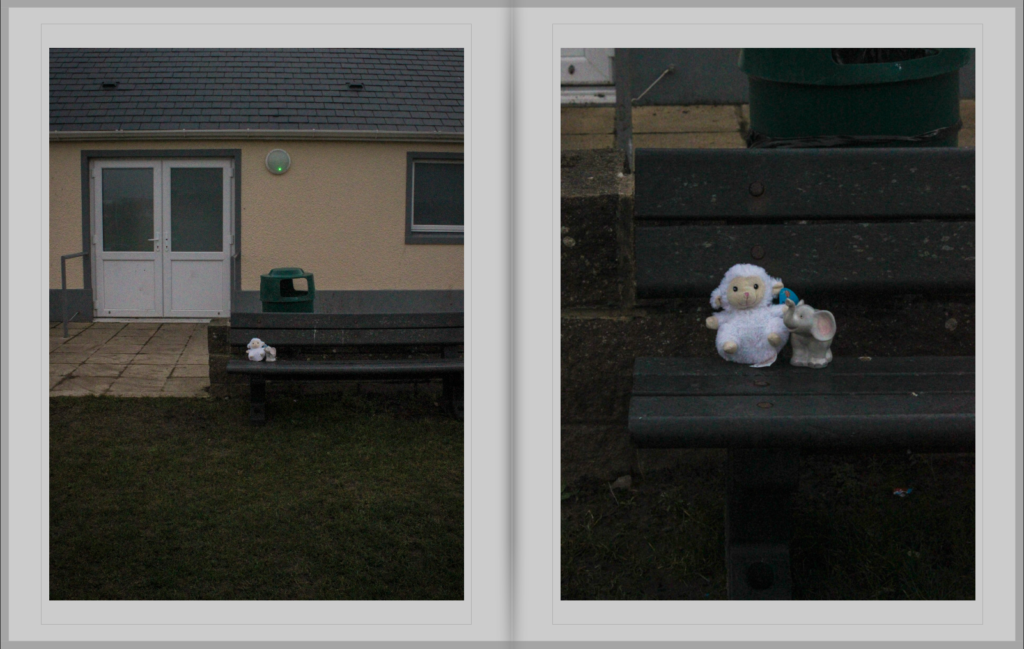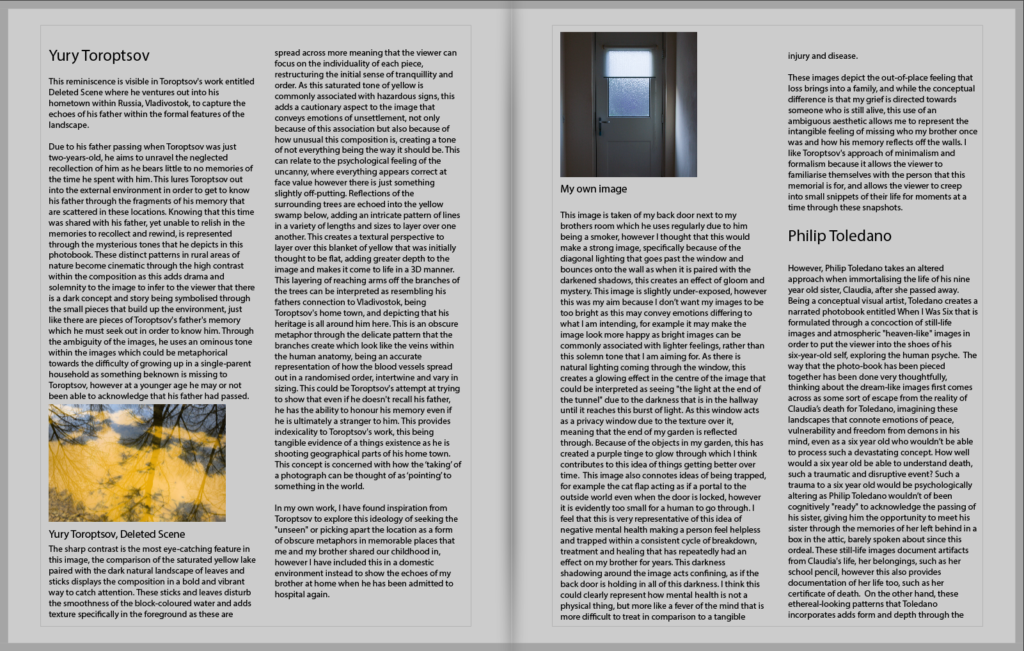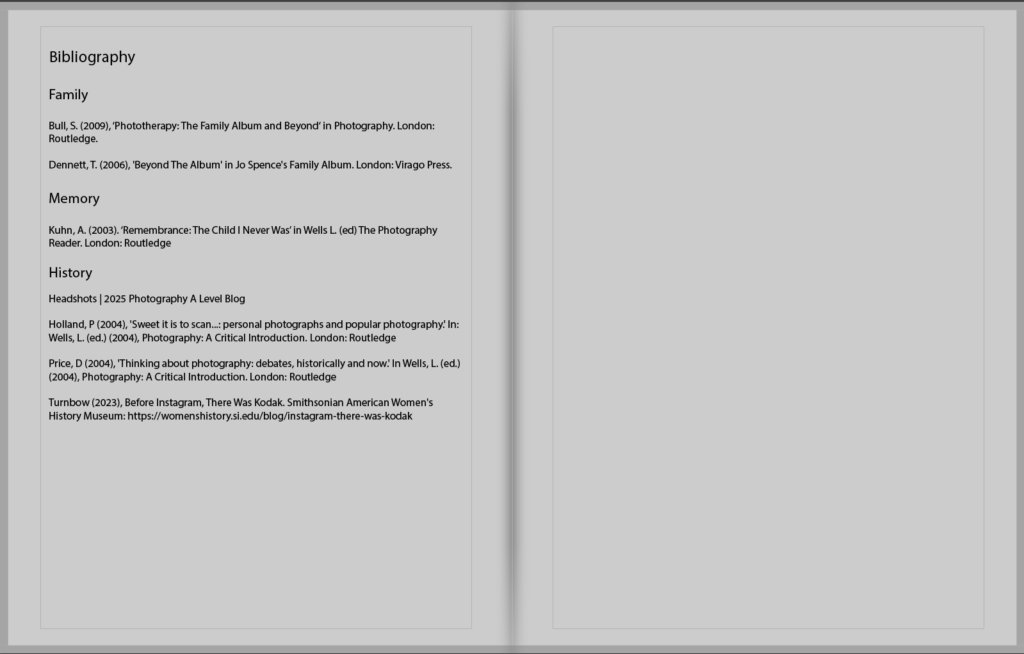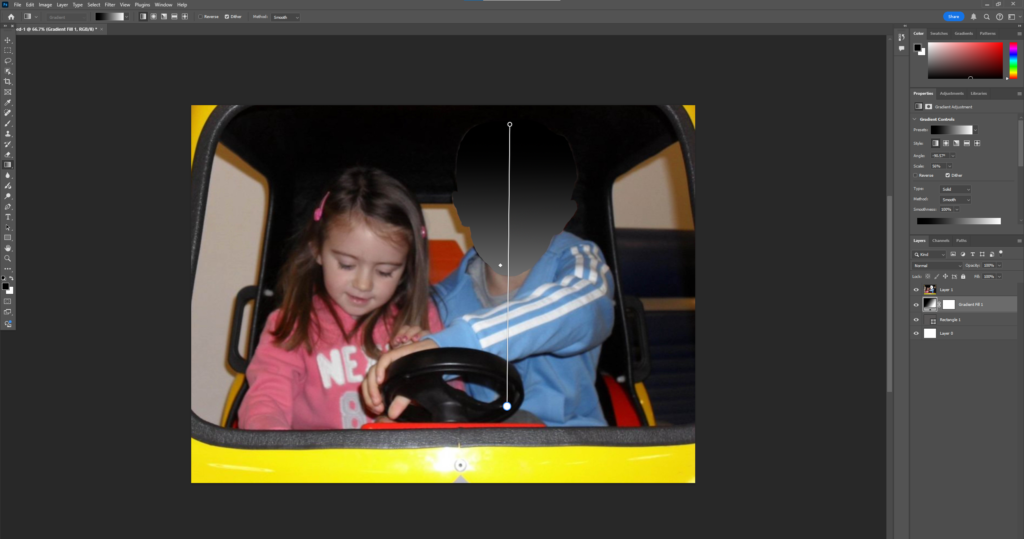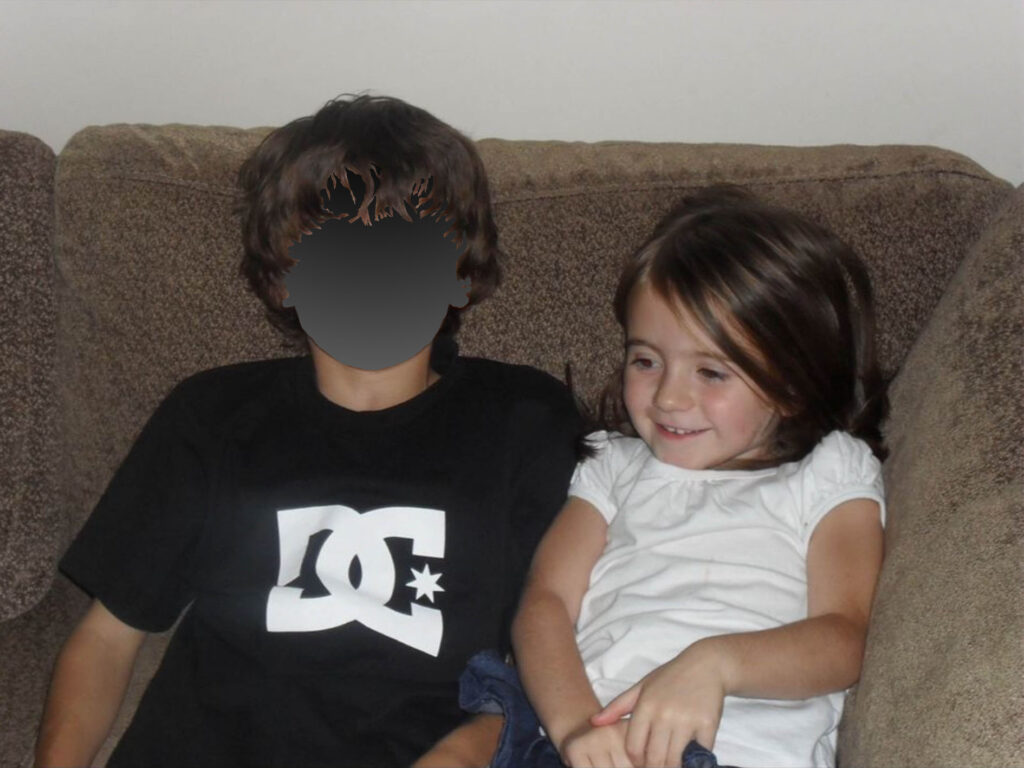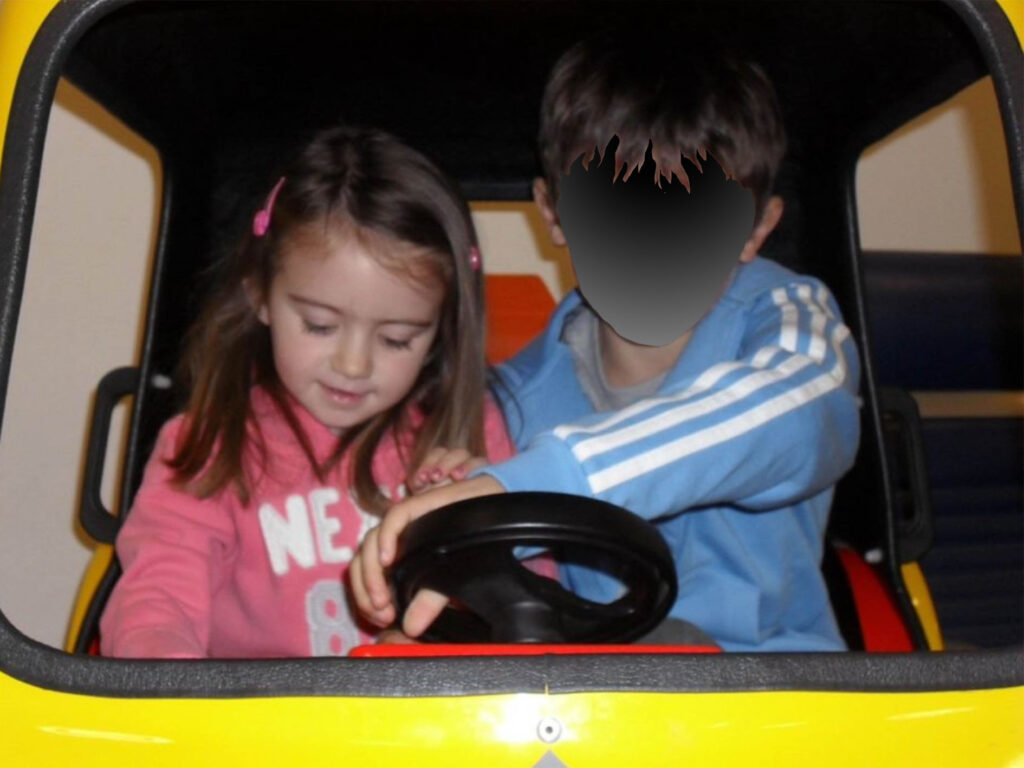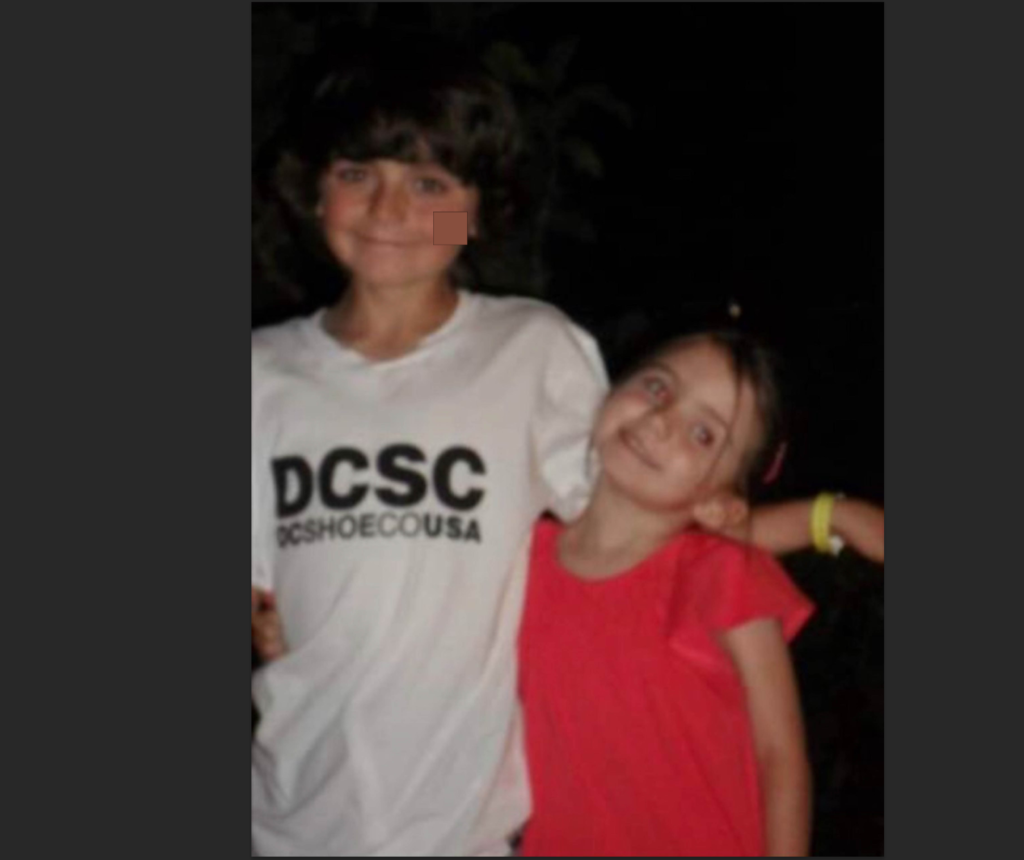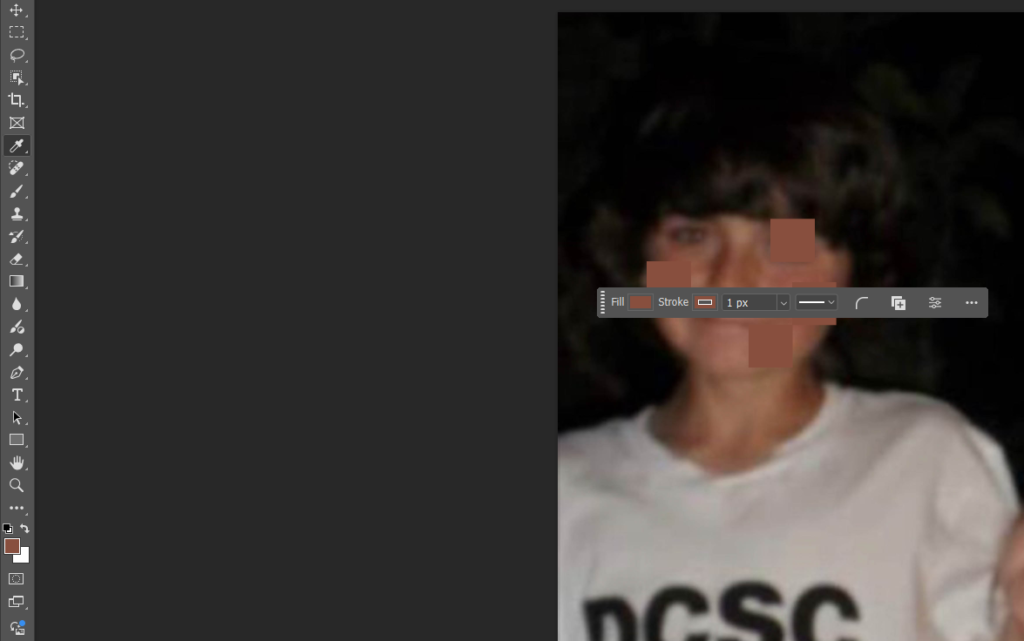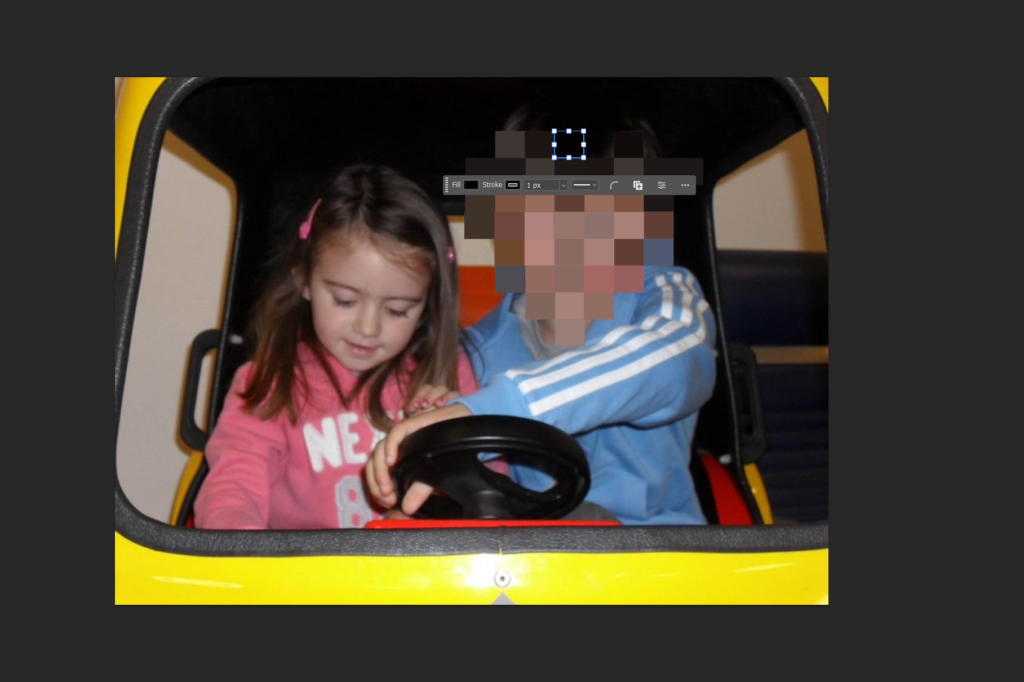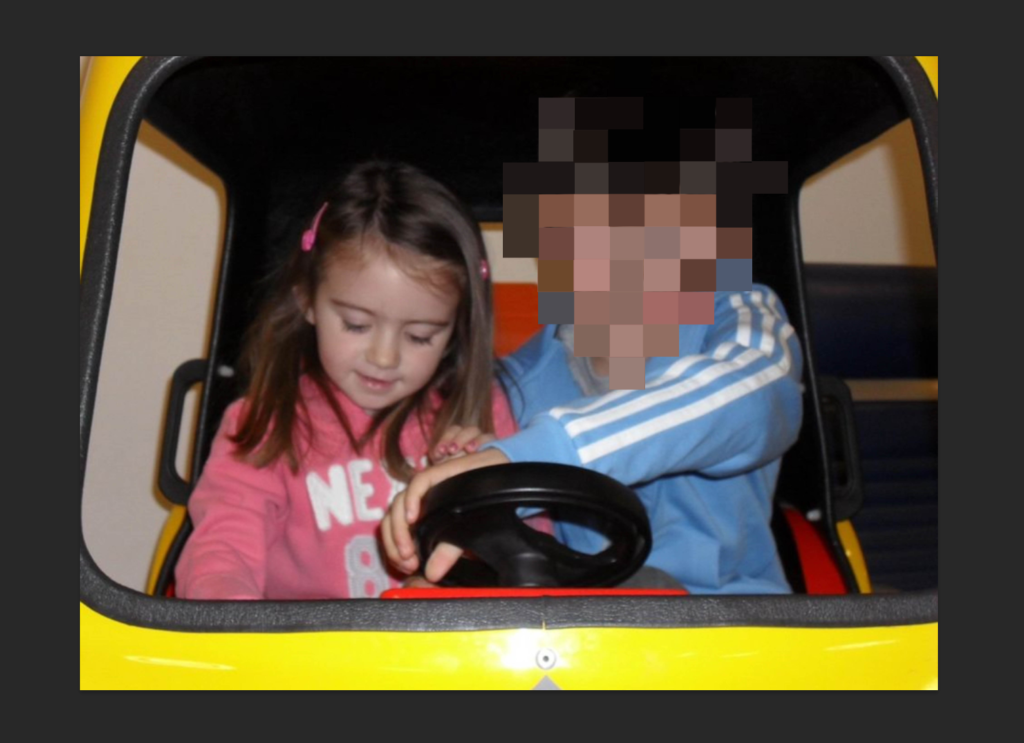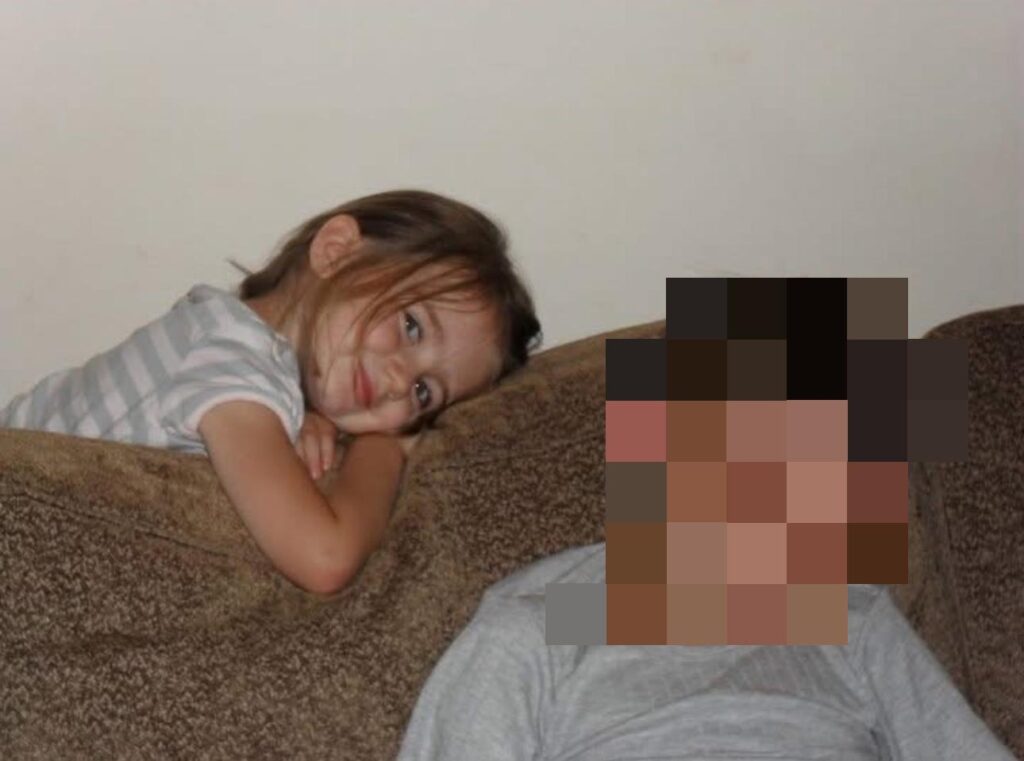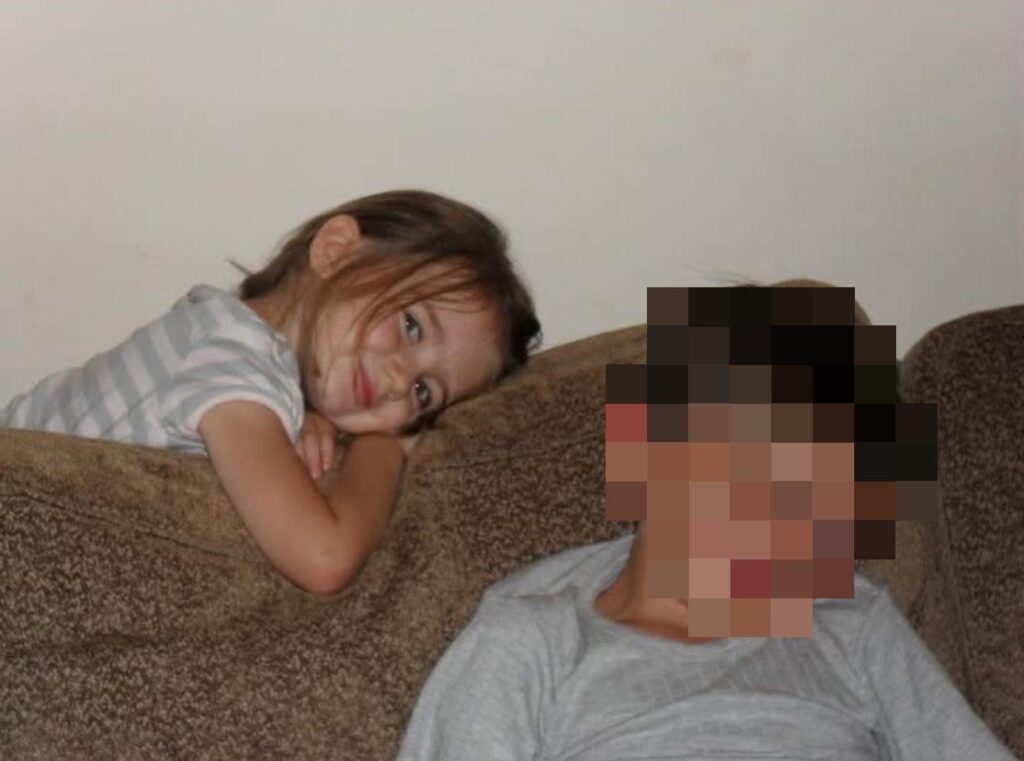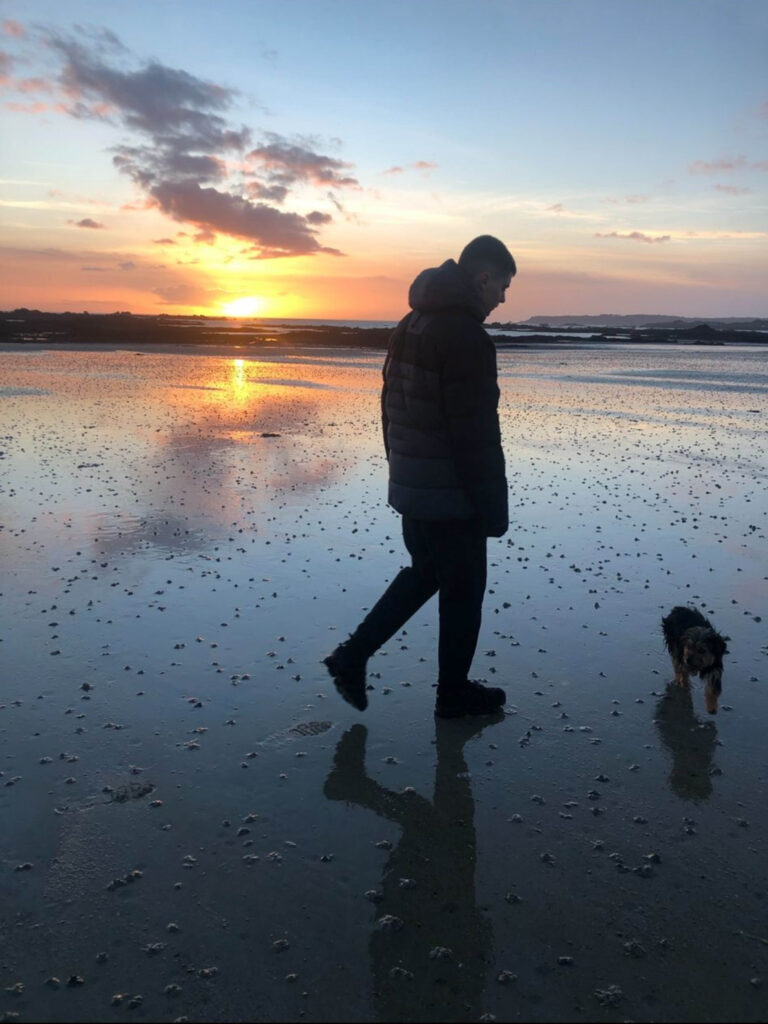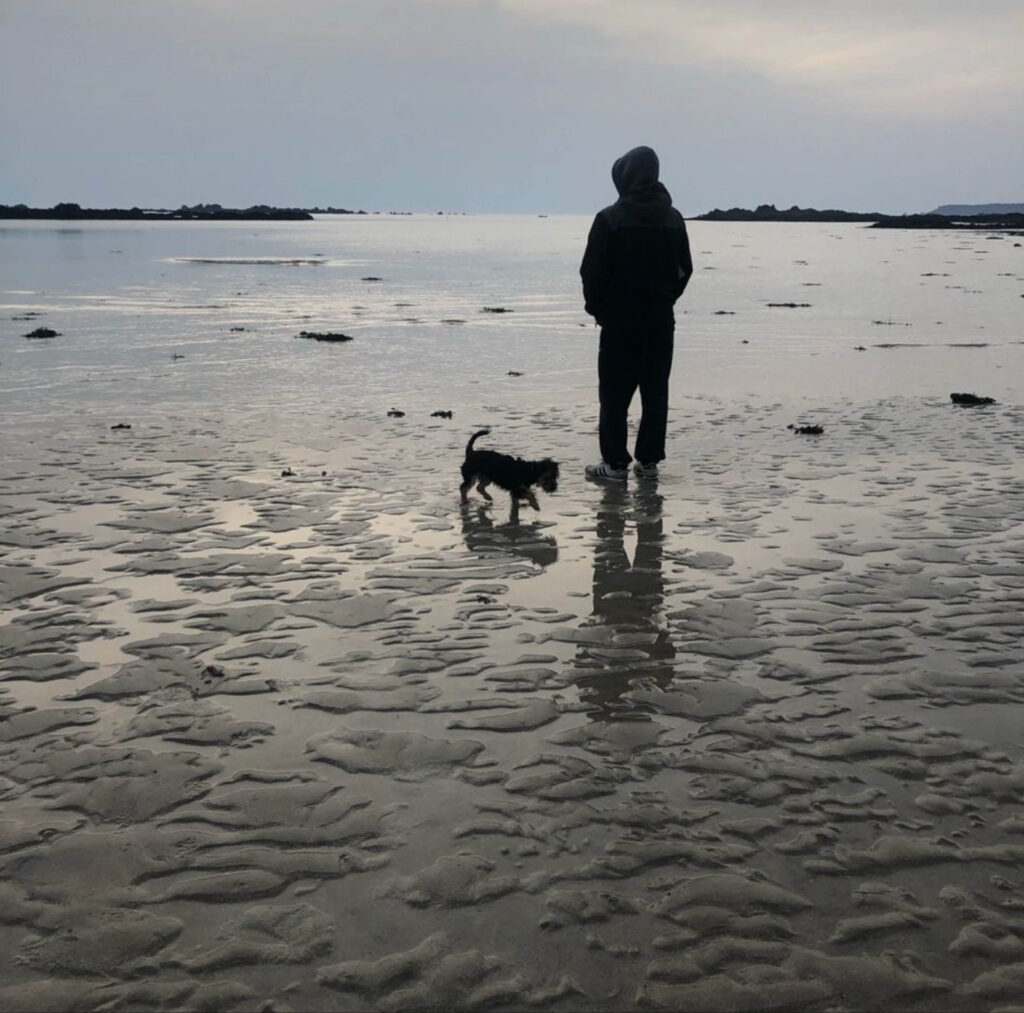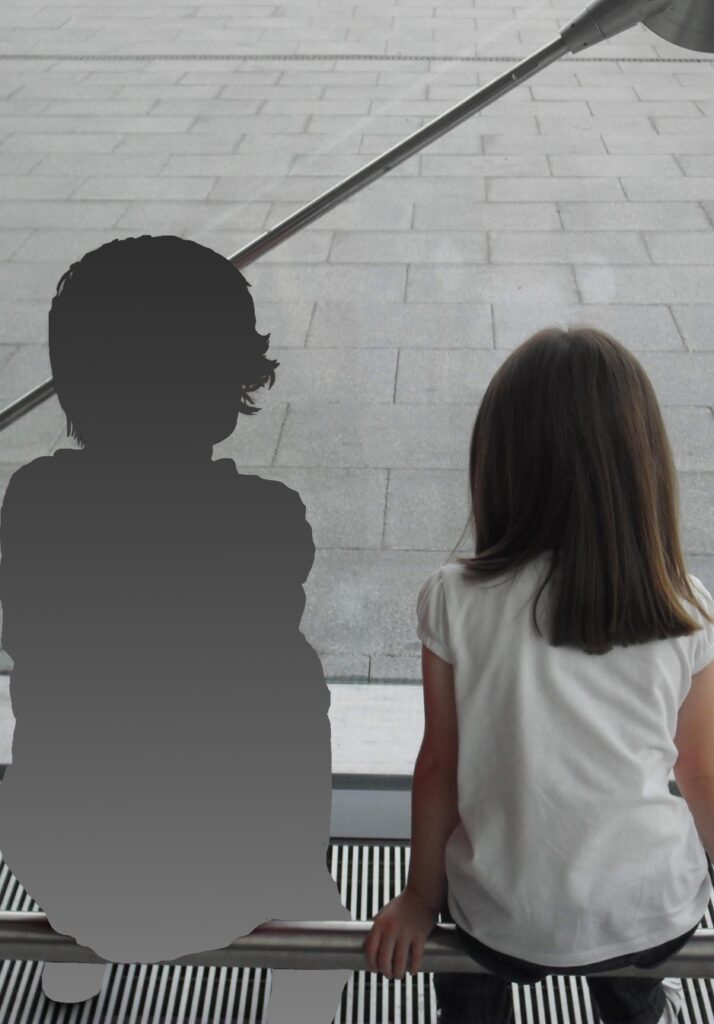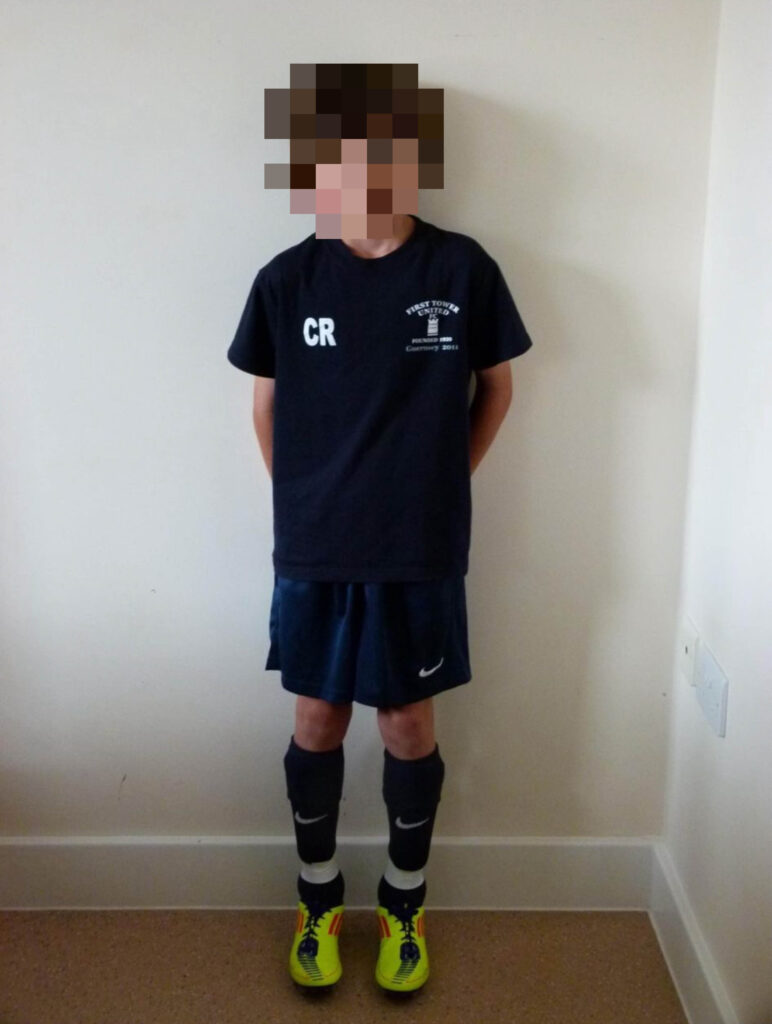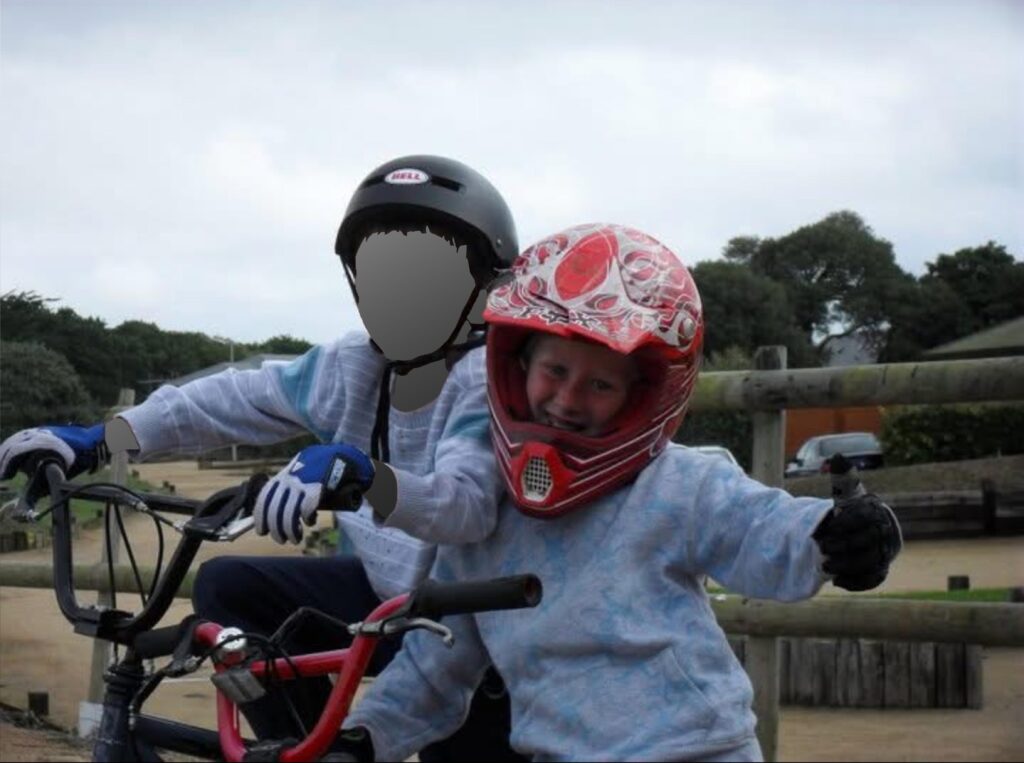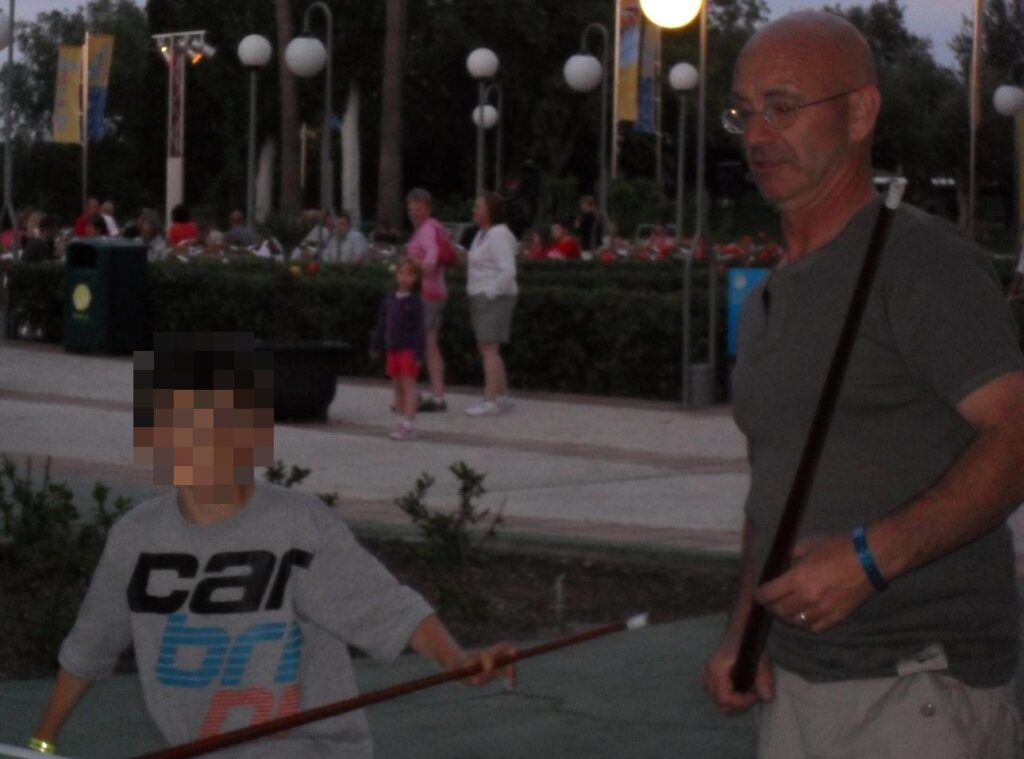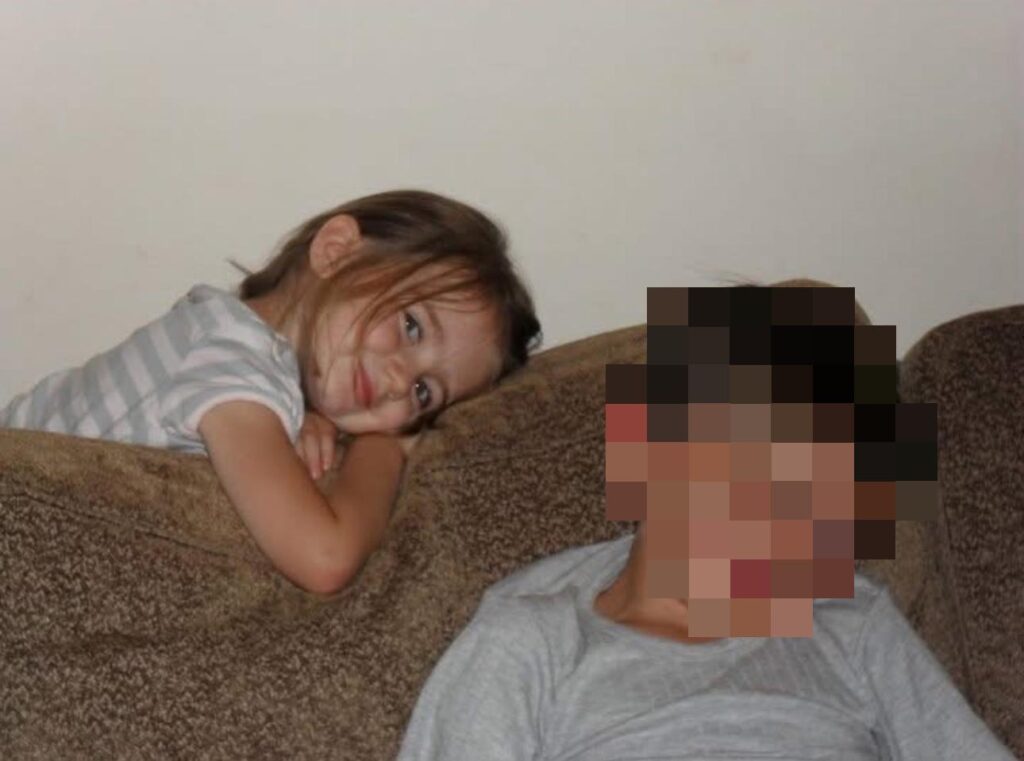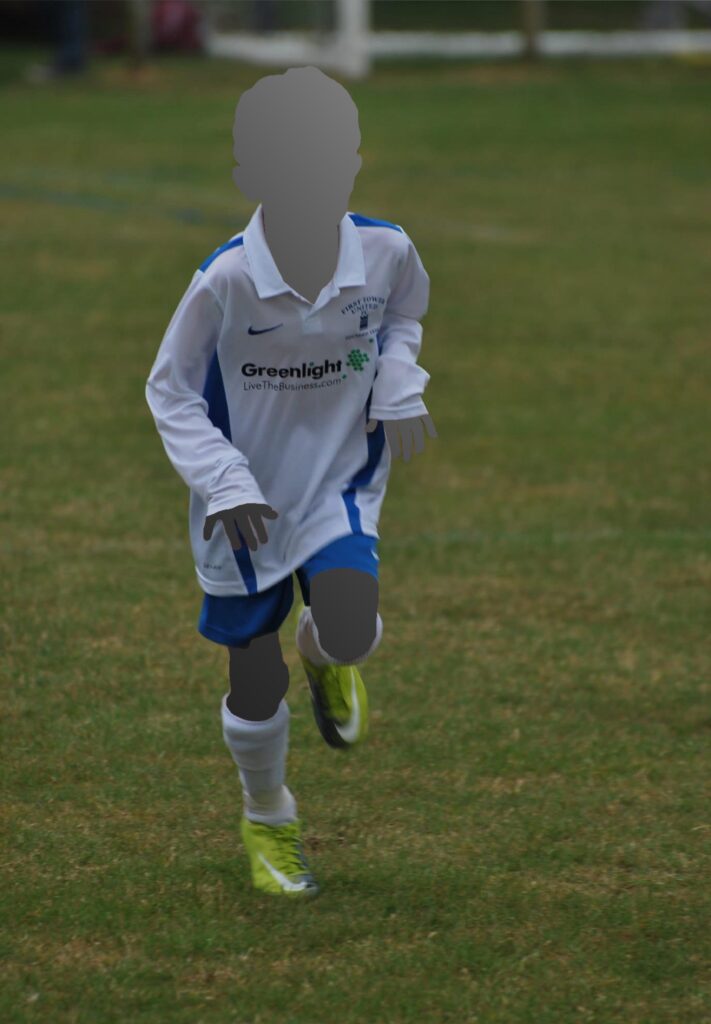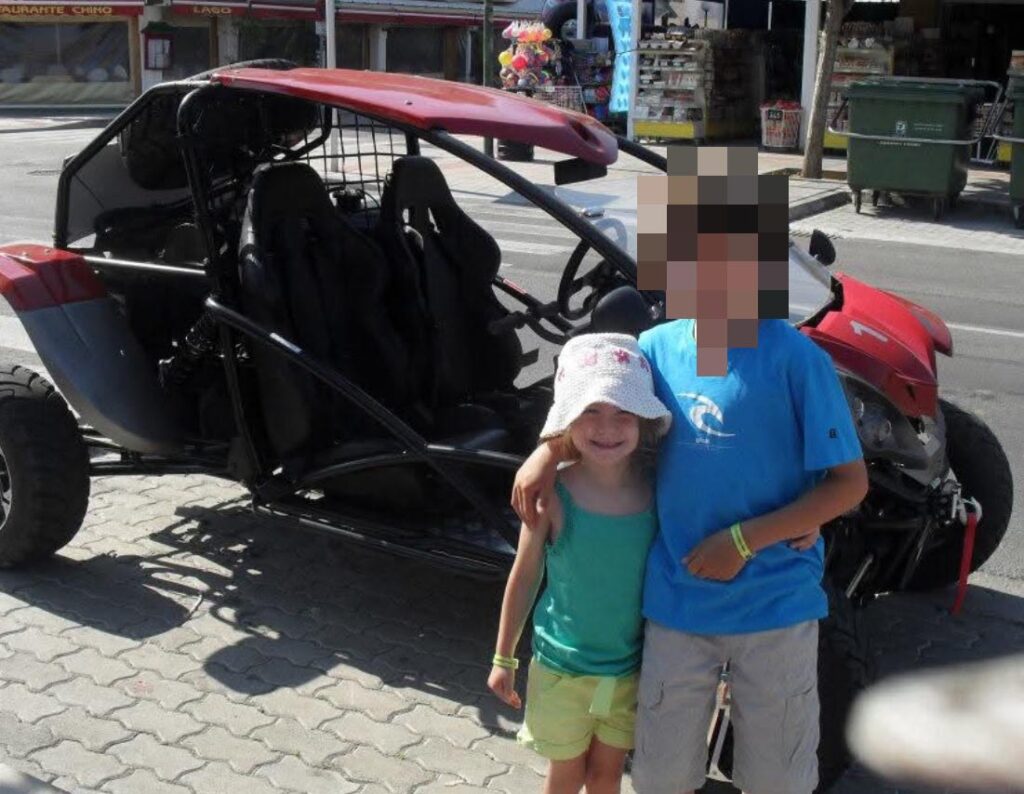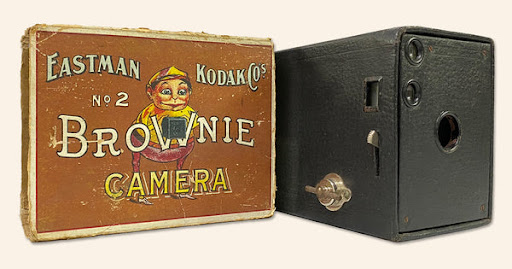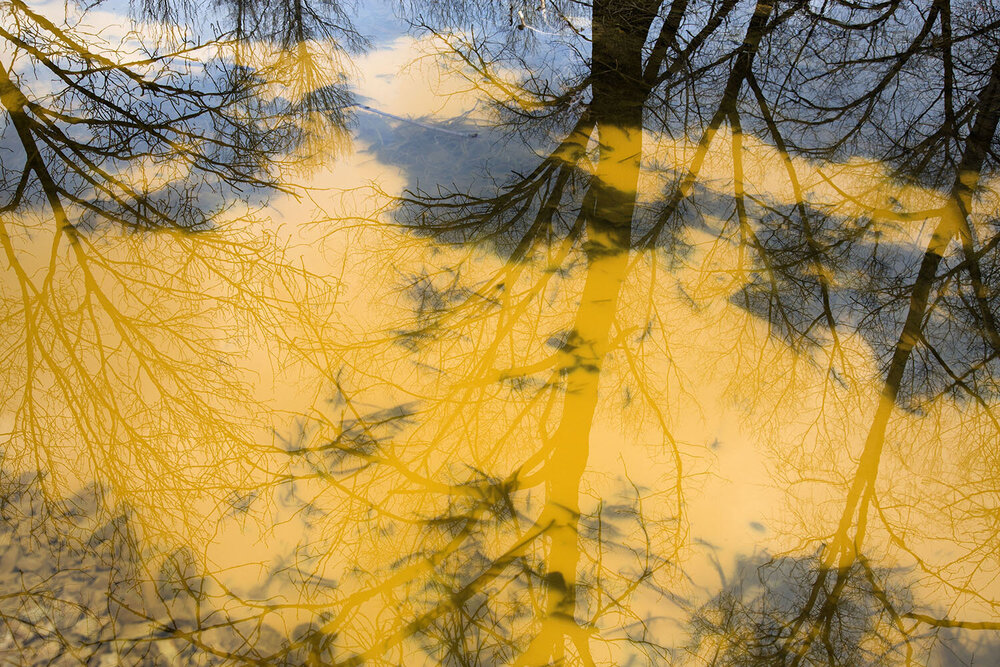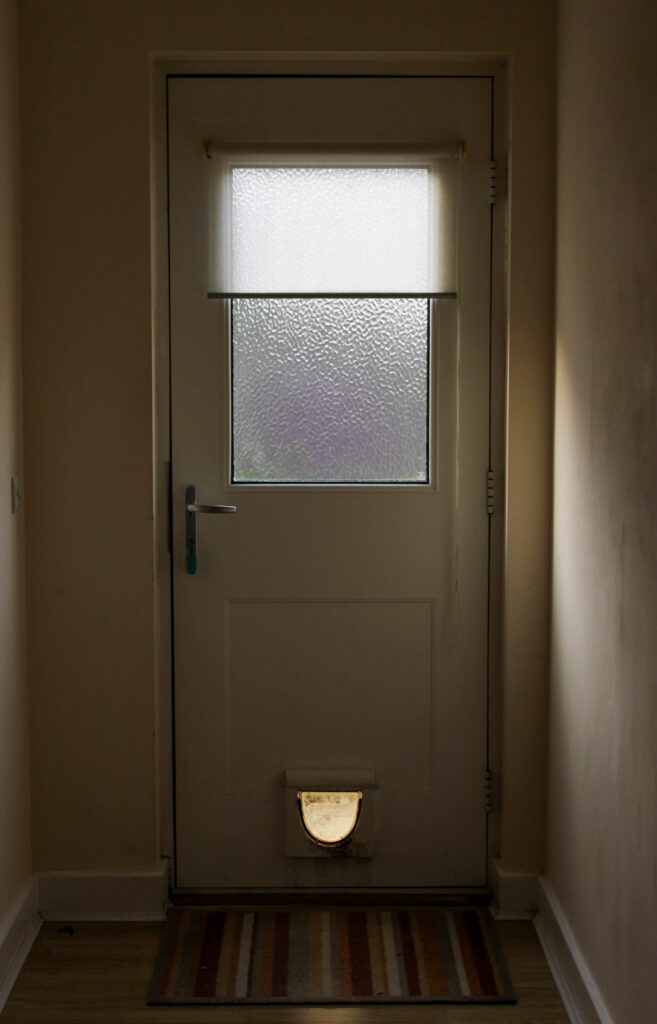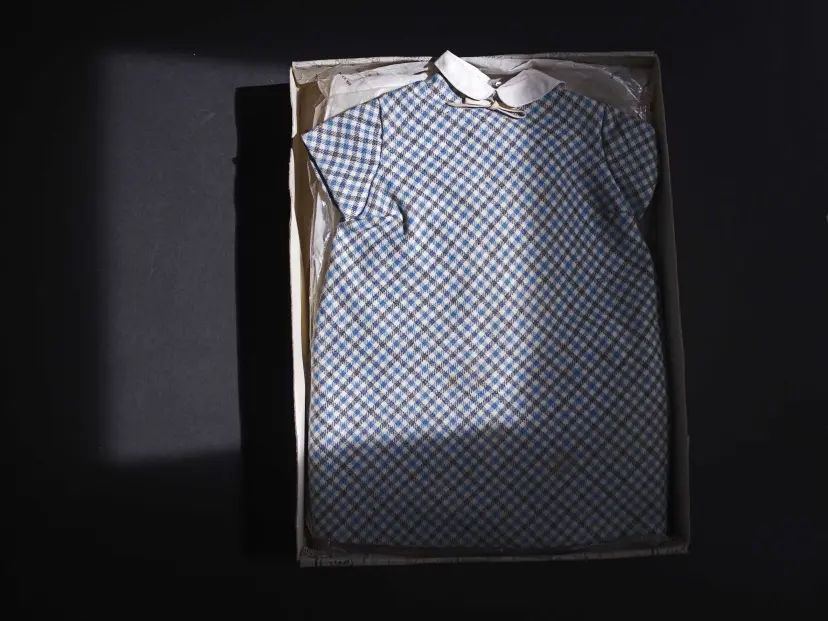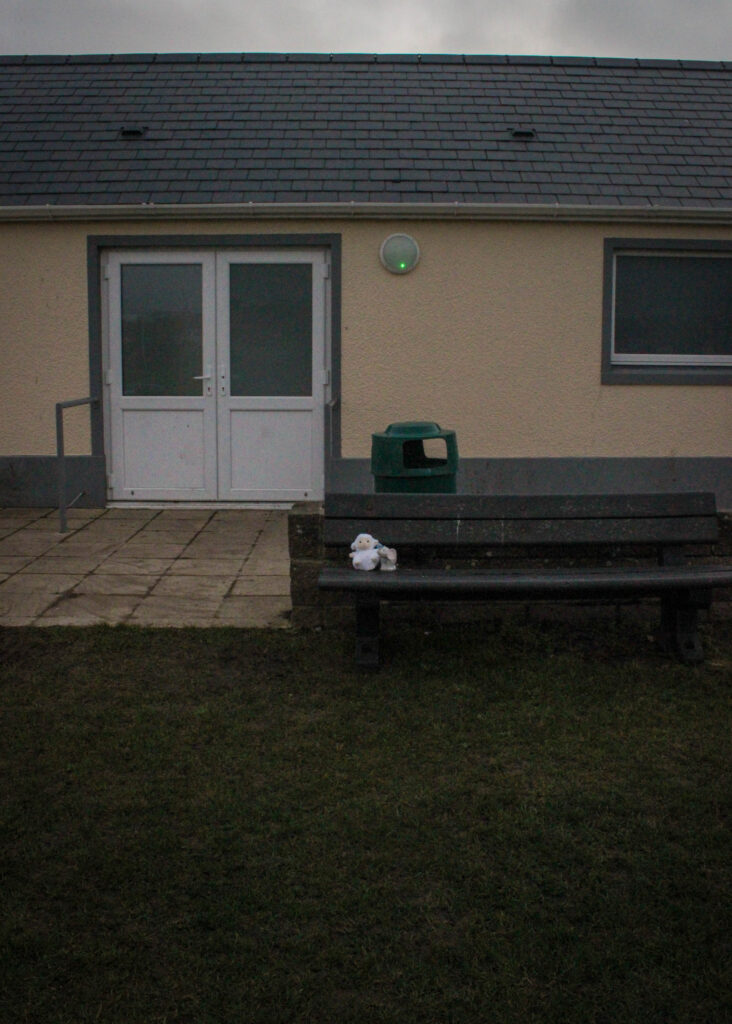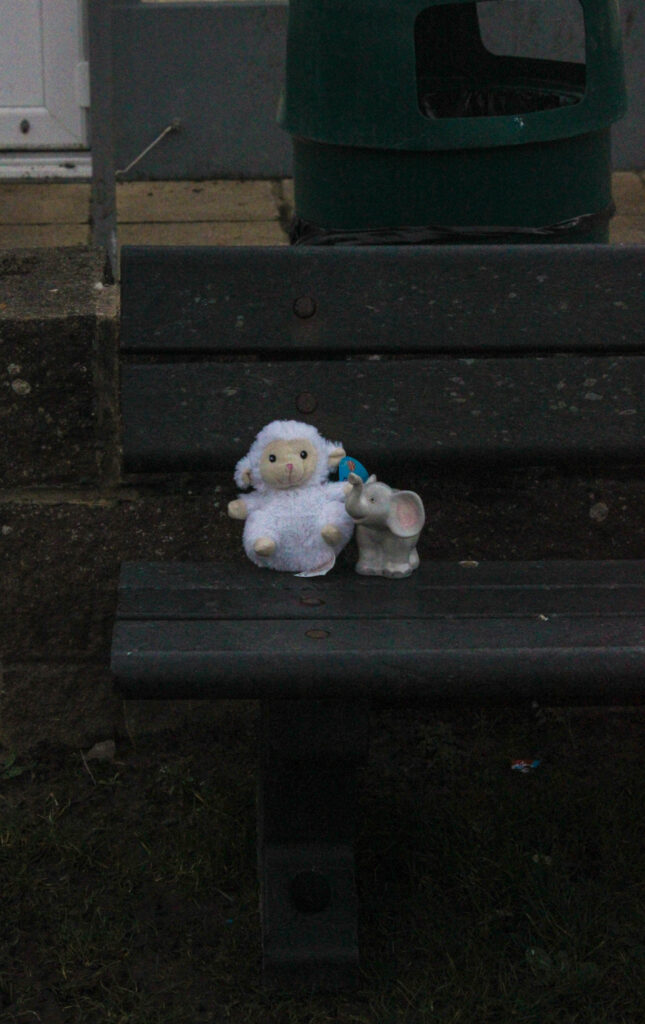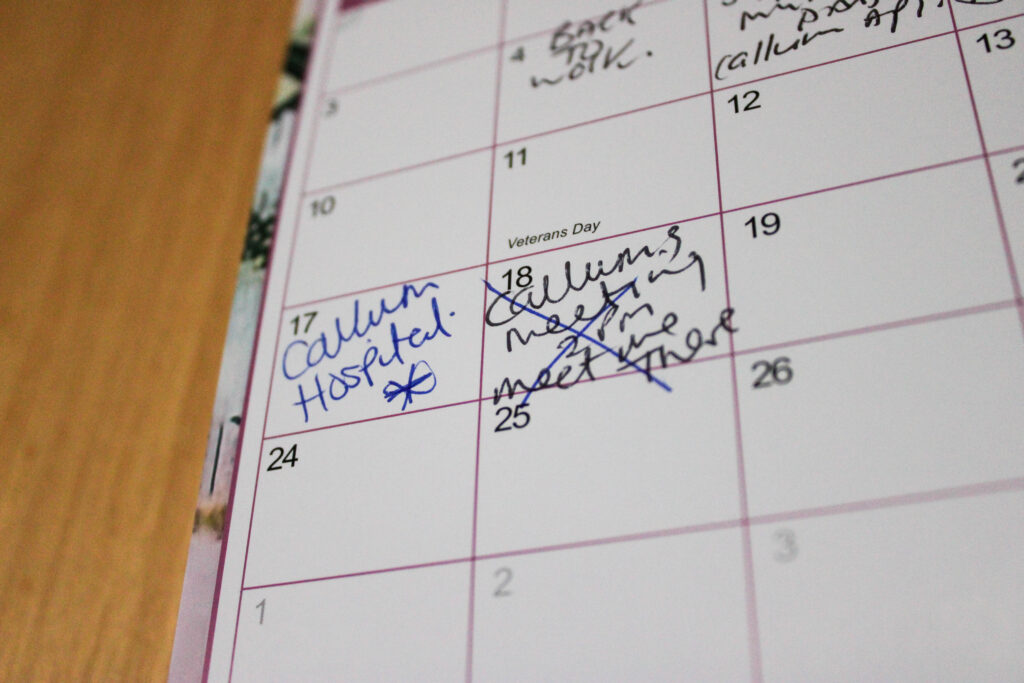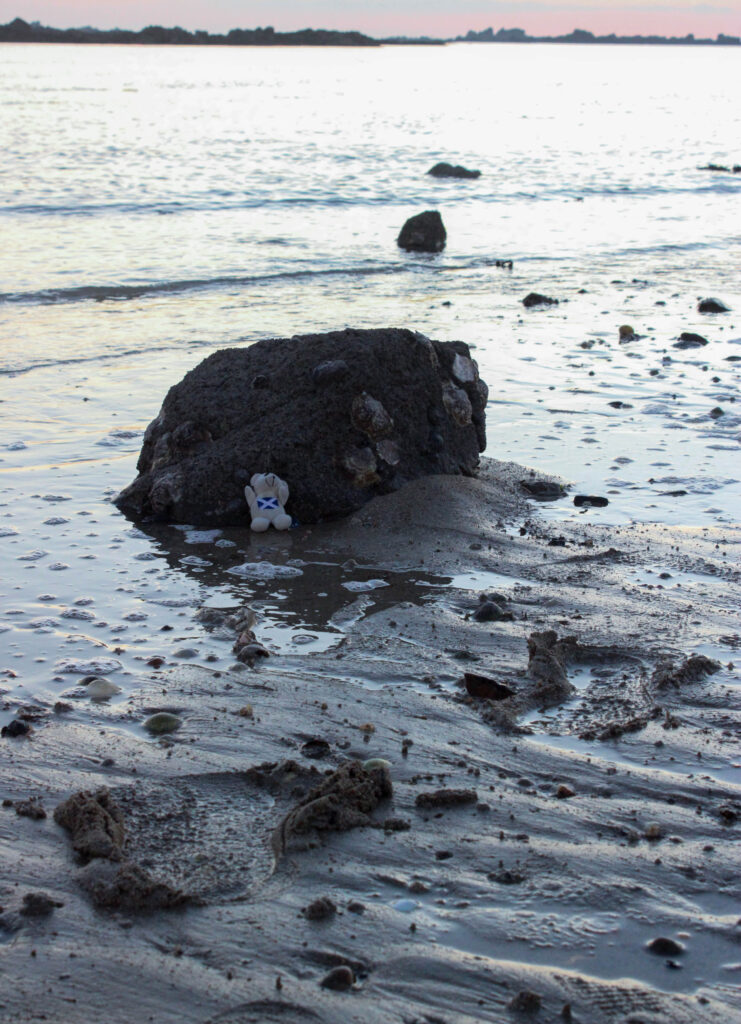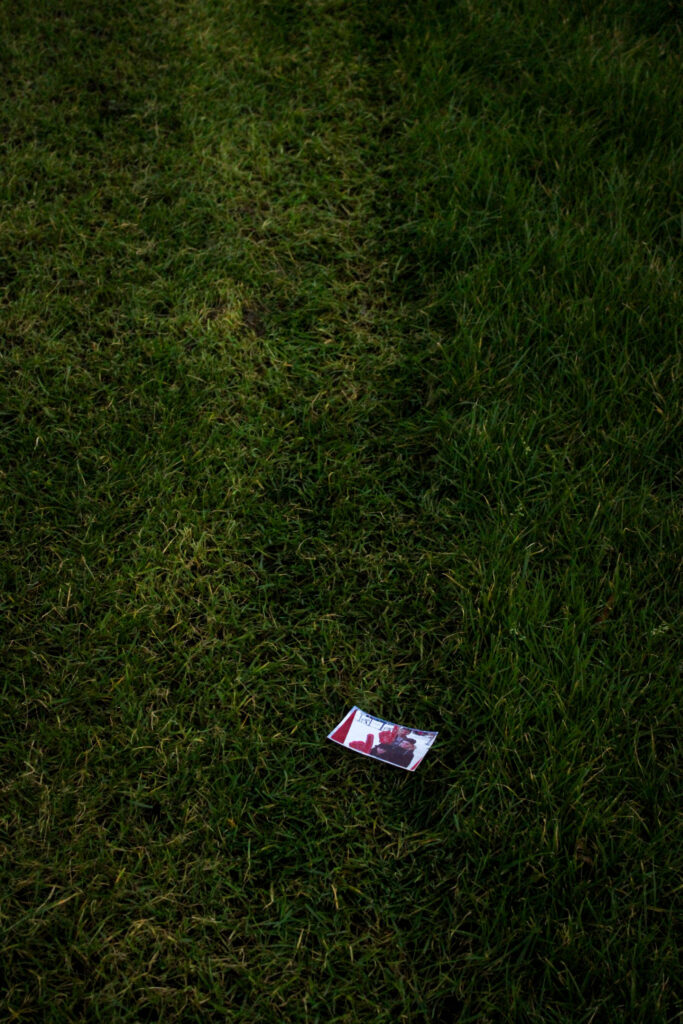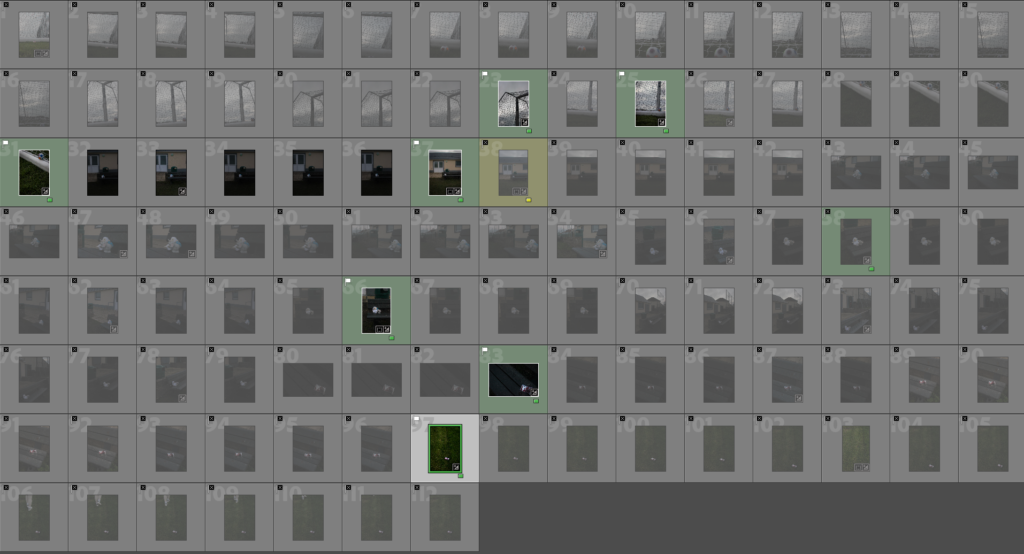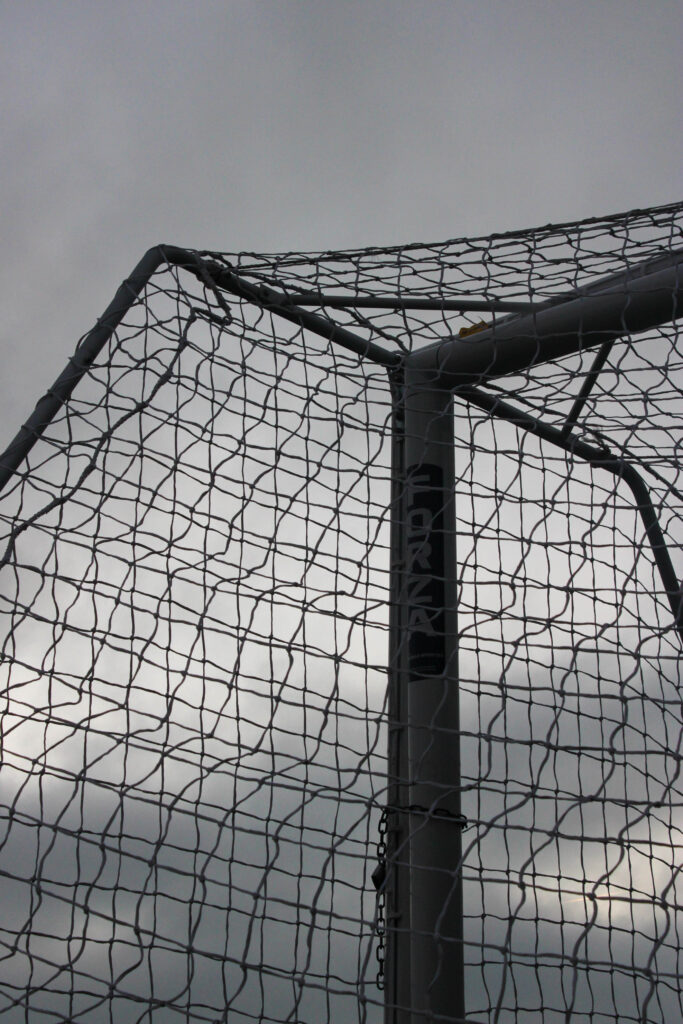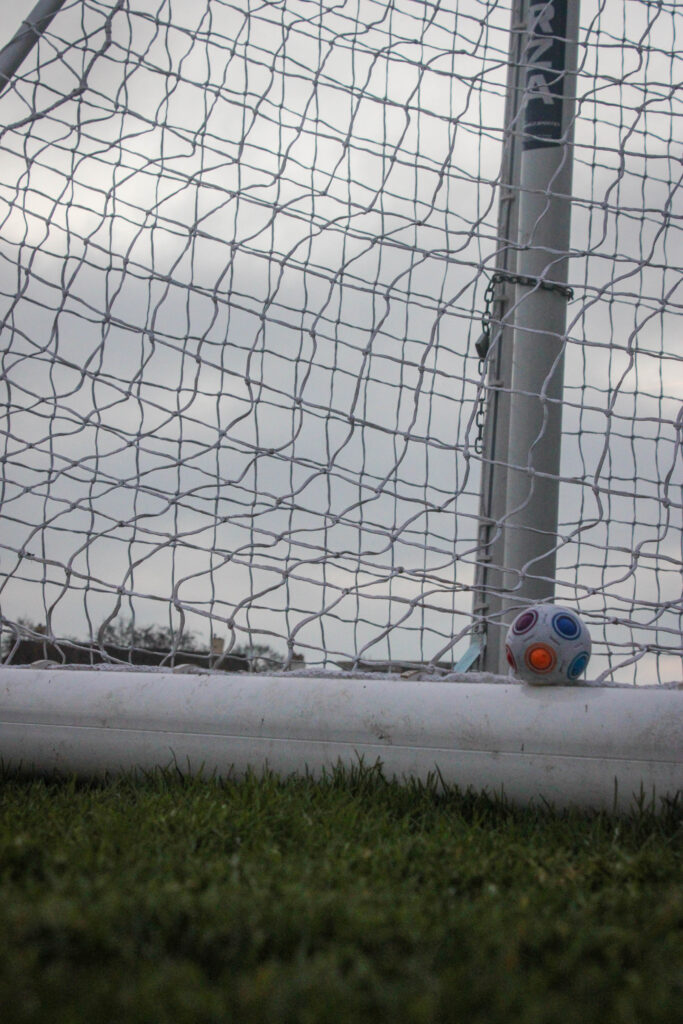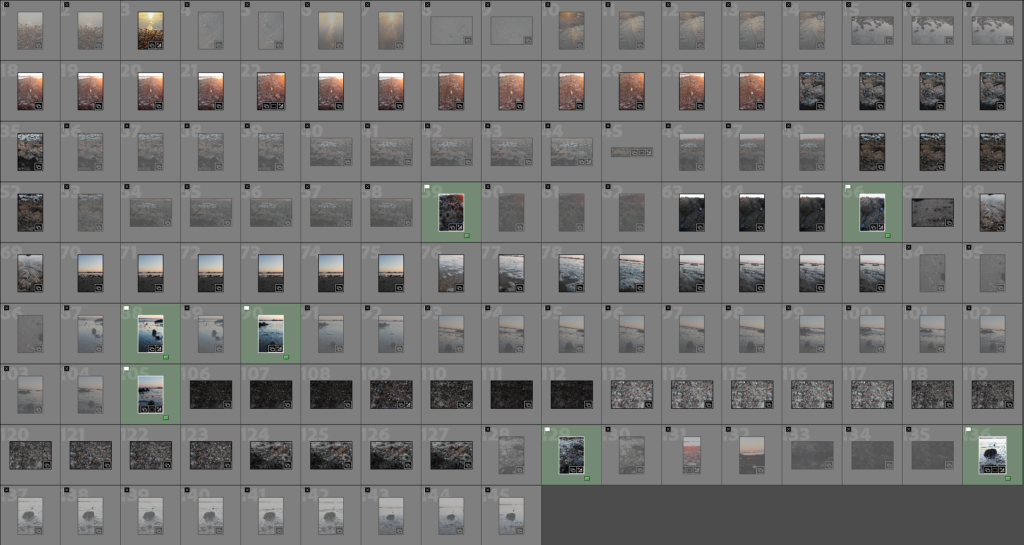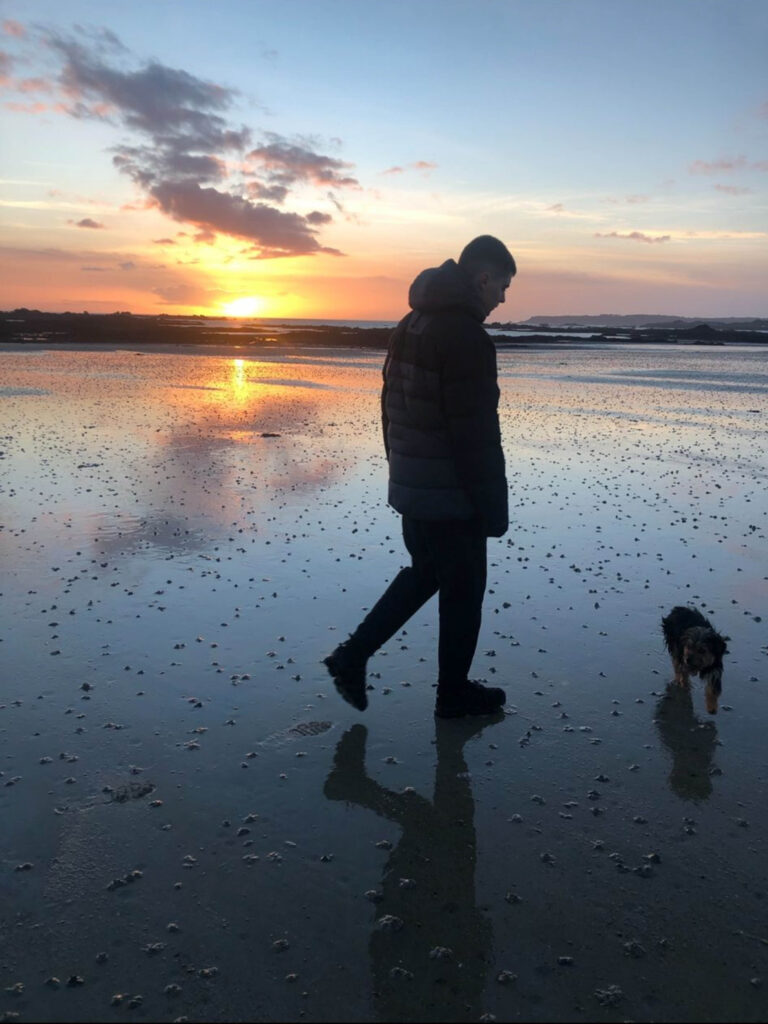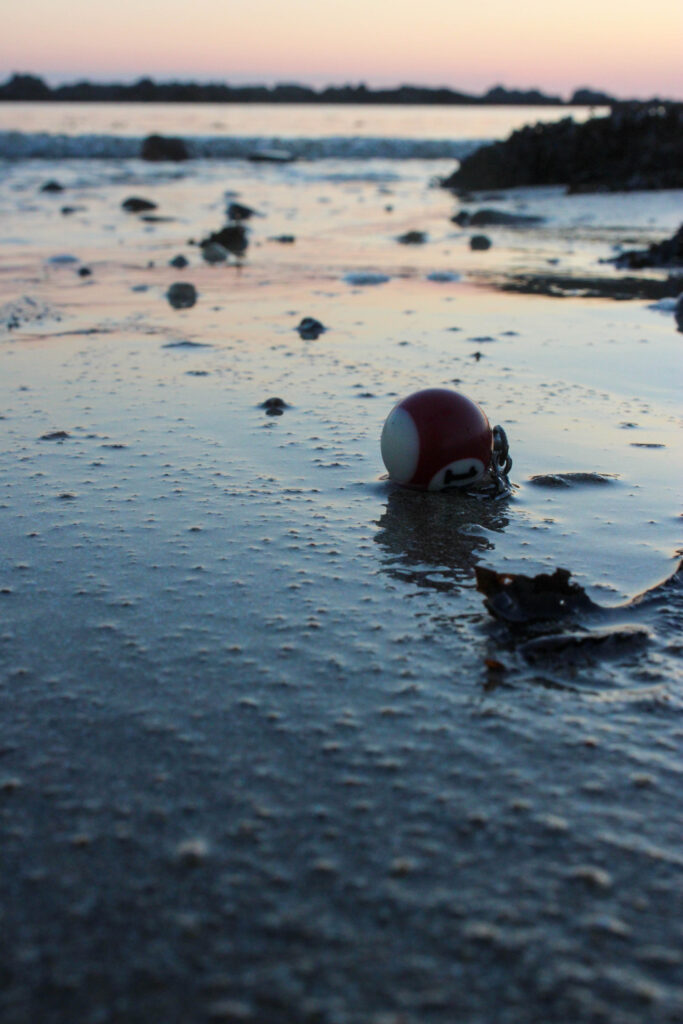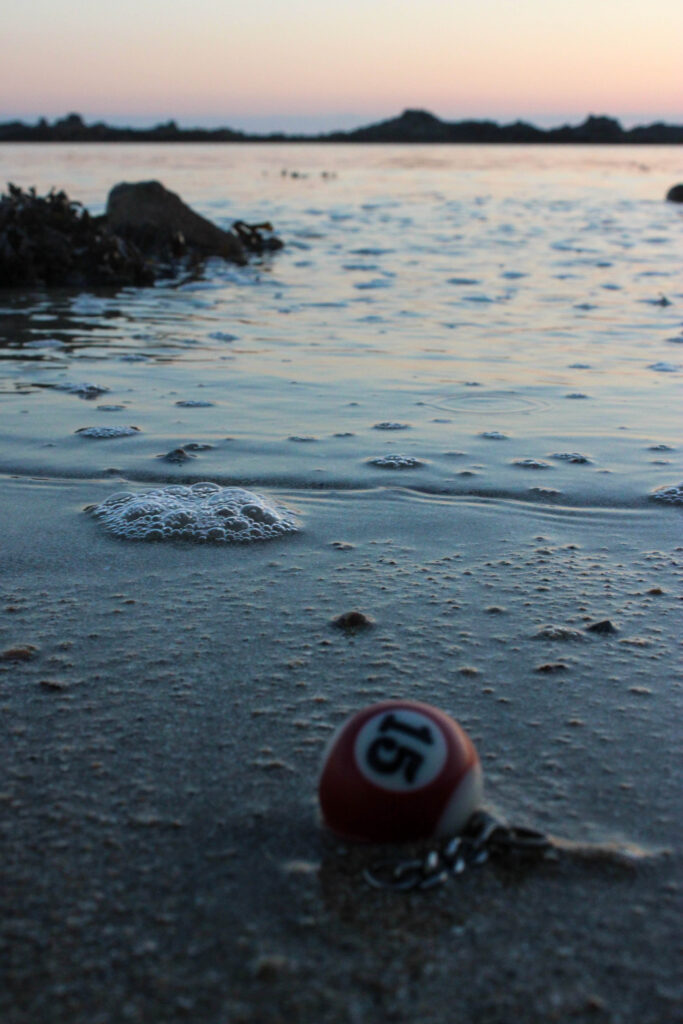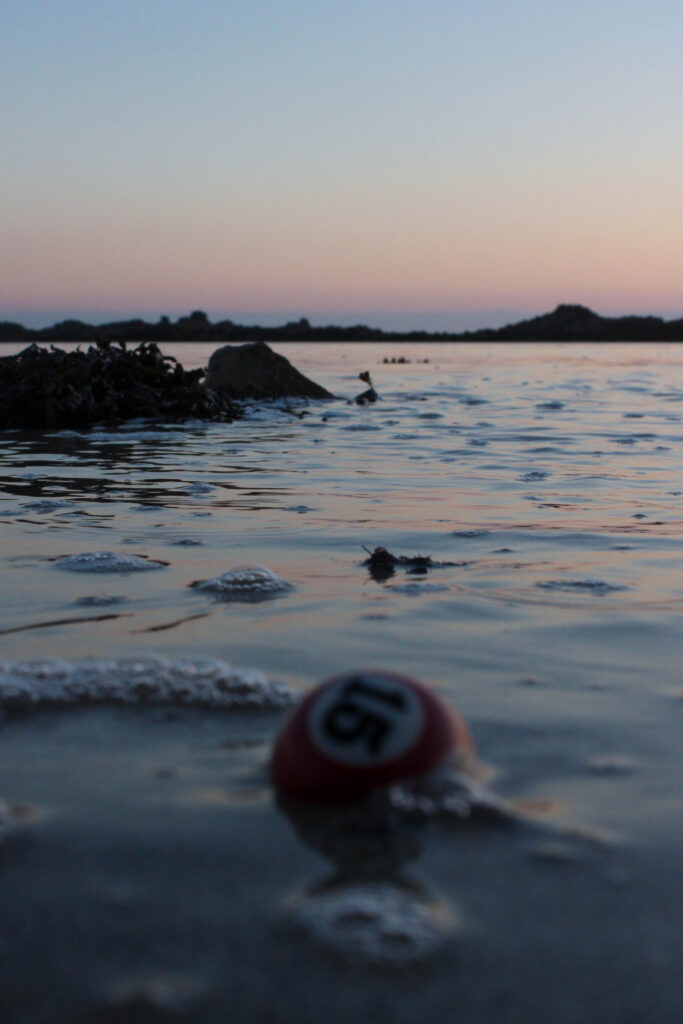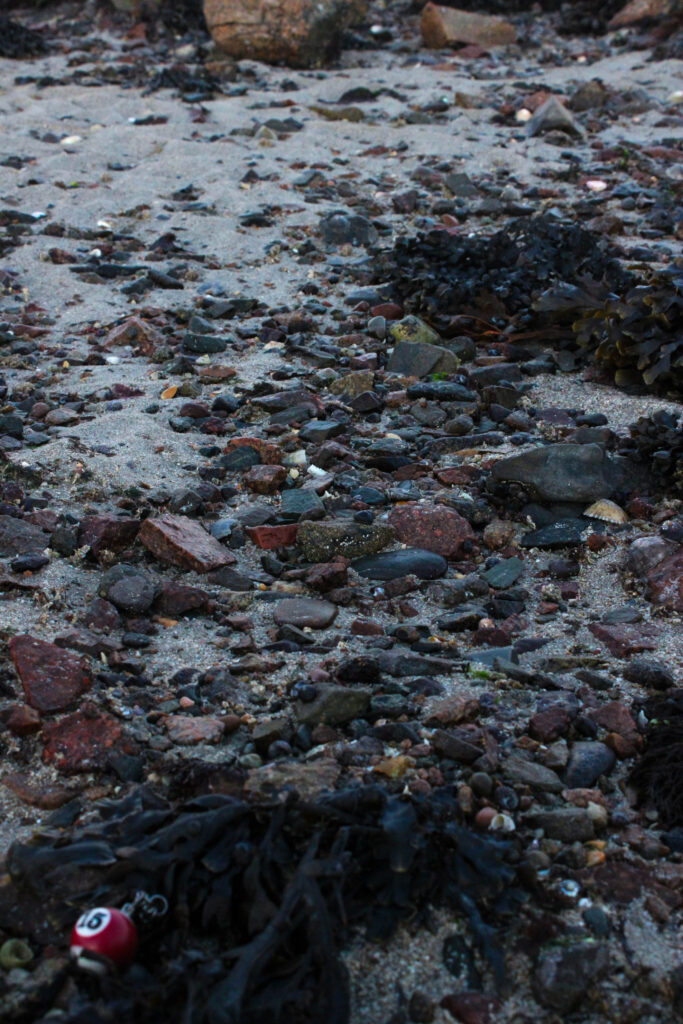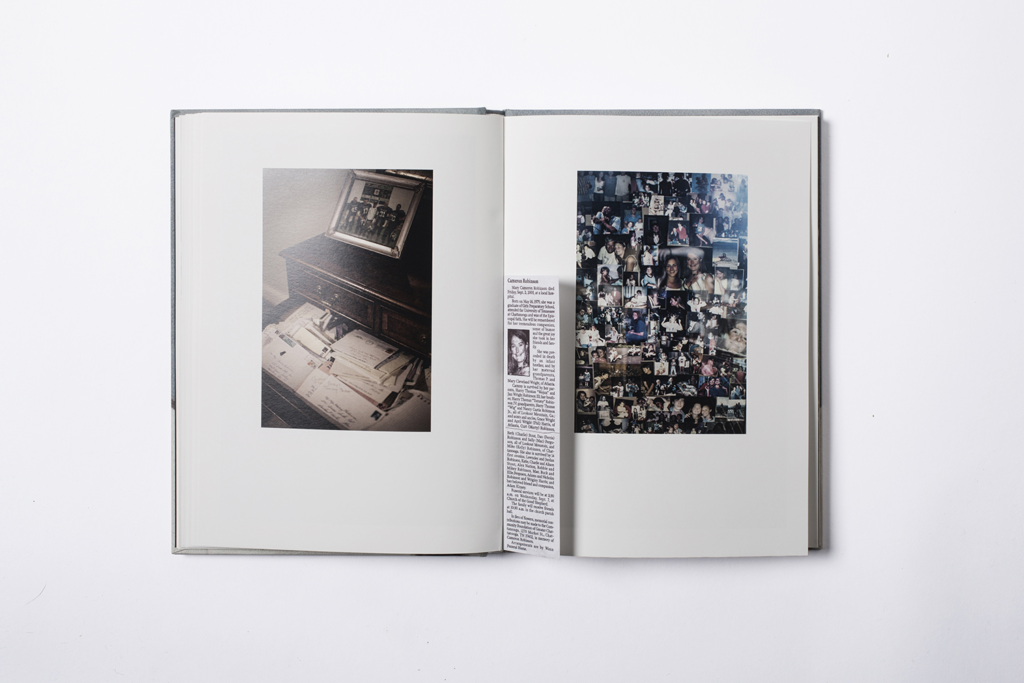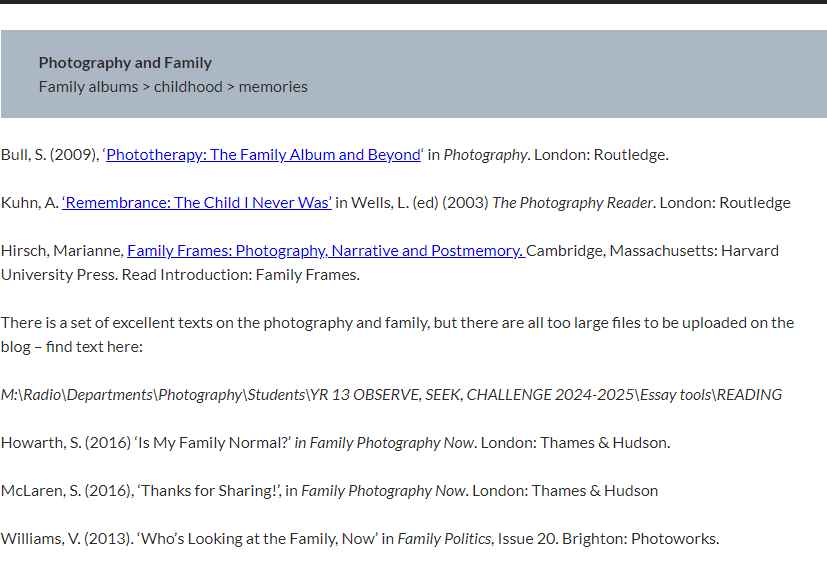Hannah Altman is an American photographer from New Jersey whose work mainly explores the themes of lineage, memory, ritual and storytelling, known for her use of natural light and intertwining of her Jewish culture. Altman has practiced photography since she was a 19-year-old student at Point Park University, practicing as an amateur on her Tumblr page.
As a 29-year-old, Altman has been involved in numerous solo exhibitions throughout America:
- We Will Return to You – 2023, Akabus Projects, Boston
- With Rifts and Collapses – 2022, Gallery 263, Cambridge
- A Permanent Home in the Mouth of the Sun – 2021, Filter Space, Chicago
- A Permanent Home in the Mouth of the Sun – 2021, AAP Exhibition Space, Pittsburgh
- Kavana – 2020, Blue Sky Gallery, Portland
- Construct of Viewpoint – 2018, Union All Gallery, Pittsburgh
- Construct of Viewpoint – 2017, Junior High Gallery, Los Angeles
- Humanism – 2017, The Temple Judea Museum, Elkins Park
- Luminous / Weightless – 2016, Lantern Gallery, Pittsburgh
- Intimate Threat – 2016, Trust Arts Education Center, Pittsburgh
She has delivered many lectures on her images and research across the US in venues such as Yale University and the Society for Photographic Education Natural Conference, with her first monograph in the permanent collection of the Metropolitan Museum of Art Thomas J Watson Library.
Her Work:





The body of work which I find most relevant to my exploration of Feminism in photography is ‘And Everything Nice’, curated by Altman at just 19 years old as a student posting on Tumblr. Altman did this in the absence of the expectation that this would have global reach, beginning in her dorm room as a personal photo project at Point Park University.
“‘And Everything Nice’ is an unflinching analysis of the standard for female beauty. The ongoing series consists of women in states of affliction; the body fluid of the models have been replaced with glitter to visualize the concept of girls invariably needing to seem attractive regardless of the actual situation” – Altman via her Tumblr post
And Everything Nice:



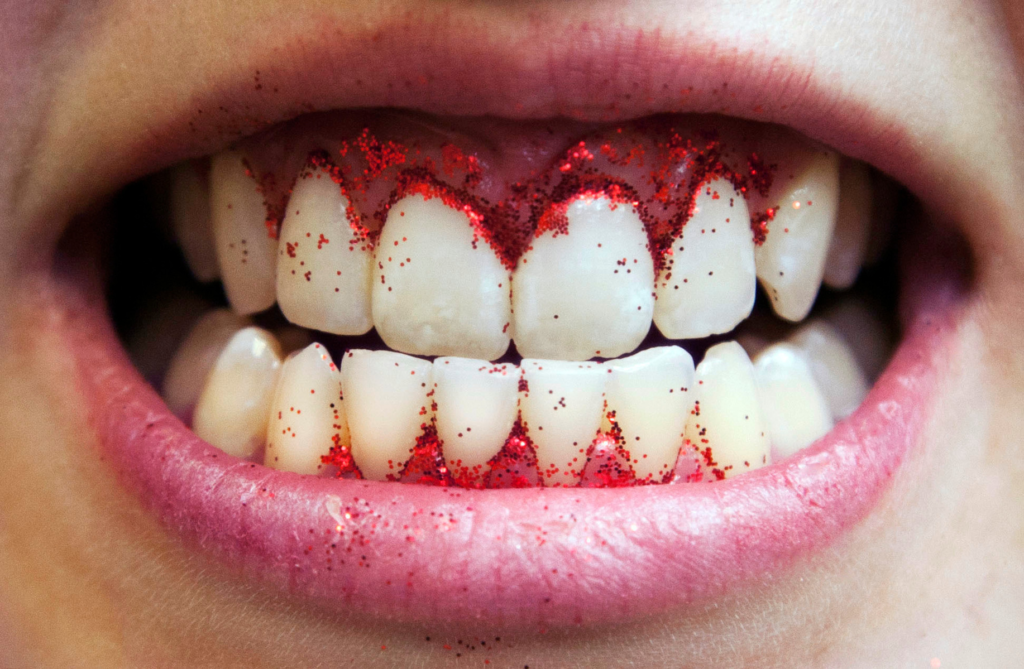
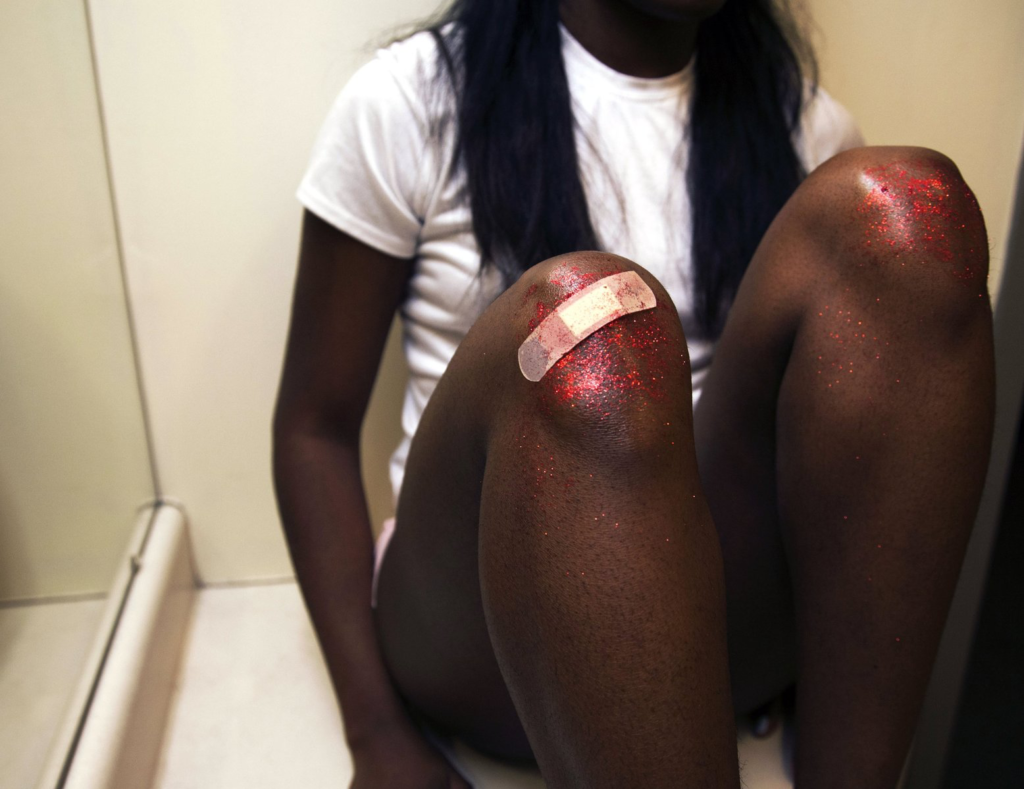
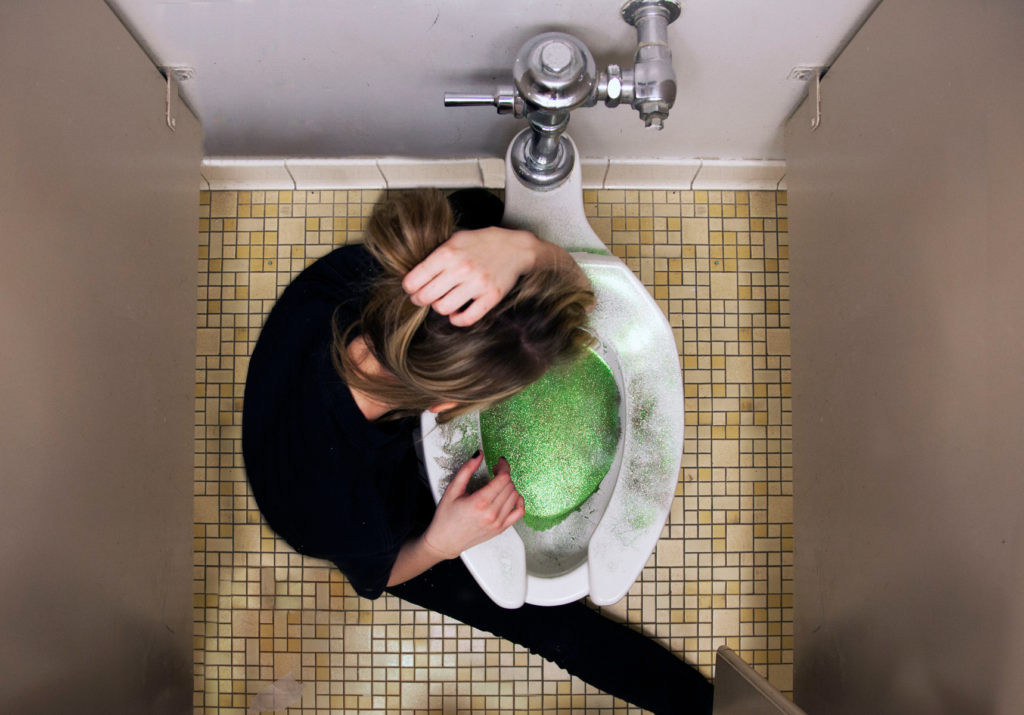
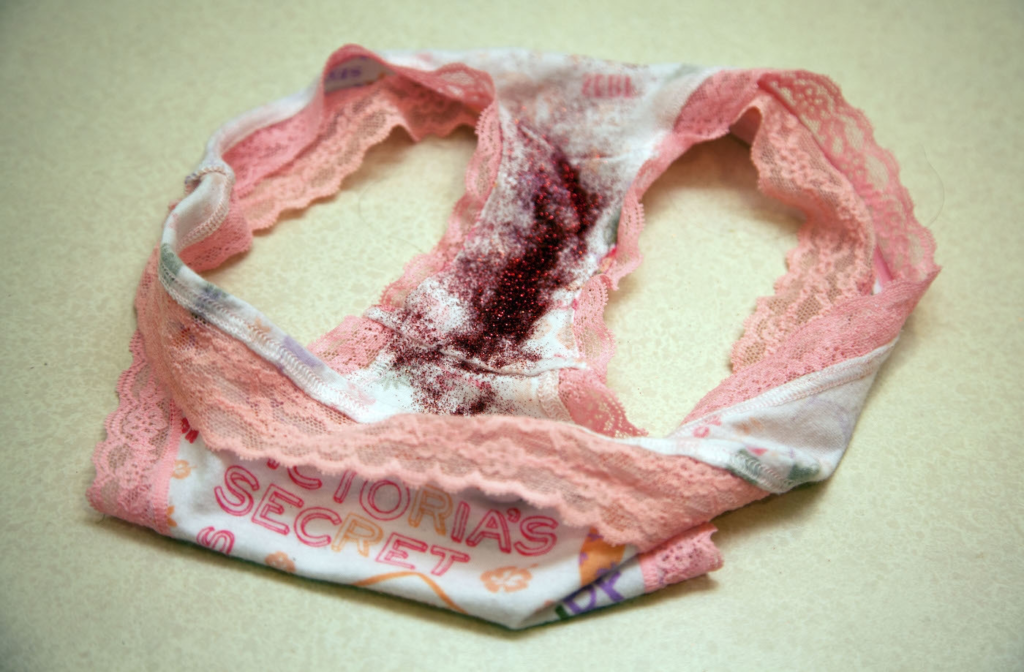
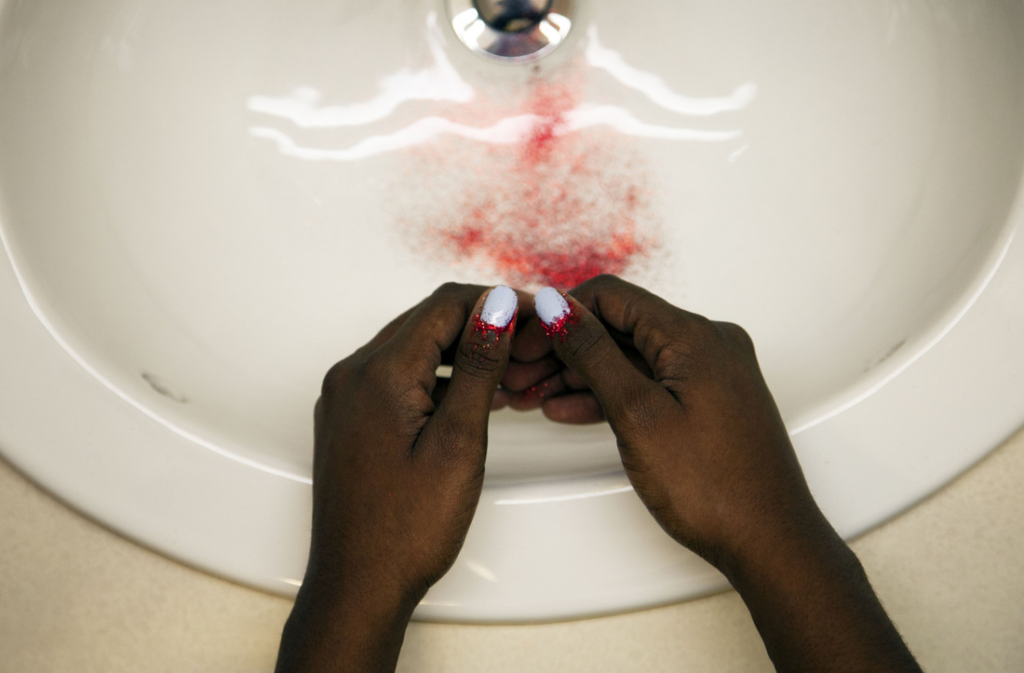
In these eight images within the series, Altman shoots images with bodily fluids such as blood, tears and vomit replaced by glitter in an act to challenge and visually represent the female beauty standard.
This minimalistic viewpoint of breaking down the standard of female beauty in a detached way allows the viewer to objectively infer how there is a consistent pressure to present themselves as attractive, without thought to the situation at hand. This alternative criticism to the societal expectation of what a woman should be like dives deeper into this concept than others because it pays attention to how even processes of the anatomy are accounted for in the beauty standard, instead of just exploring the stereotypes of ‘what a woman should be like’ at face value.
Altman also uses glitter in replacement of vomit as a young girl lays over the toilet which could be used to target the teenage culture, being going out and drinking with friends (underage or legally) to the point of sickness – something that is normalised when reaching teenage years and wanting to try new things. However, I find that this is highly applicable to the millions of girls who experience eating disorders at such a young age. Bulimia nervosa is a condition where the subject typically purges themselves, this being the self-induction of vomiting to forcefully evacuate the body of stomach matter. This is also down to the misuse of laxatives or dieting pills. I feel that this is highly relevant to the image because many young girls gain a distorted perception of themselves due to a constant reminder in the media of a false image of a woman. This is an extremely common issue and repercussion of the beauty standard being set against young women that psychologically restricts them from feeding their body and mind, resulting in extreme issues and even death. This image is so important because this is an issue that mostly arises during teenage years, with the prediction that 28.8 million Americans will suffer from an eating disorder in their lifetime, with an estimate that 3.4 million people are suffering from eating disorders around the UK too. With an issue that may be seen as normalised by young girls by wanting to be severely underweight in hopes that it may better their self-esteem, images like this are so important because this is something that occurs behind closed doors and by explicating the symptoms of it, it may be a ‘wake-up’ call for young girls and even women who have carried this into adulthood. Misogynistic viewpoints are a factor at the centre of the development of eating disorders which is something I aim to challenge in my work through this photoshoot.
Using this as a replacement of blood too could be seen as symbolic of domestic abuse and male violence, where Altman uses nosebleeds and cuts on knees with plasters on them, and this ‘blood’ smeared. This could be representative of the risk of young girls getting into toxic relationships or situations due to being so vulnerable and impressionable. However, this is also applied in the form of period blood and blood on a razor, crucial in reinforcing Altman’s idea on the pressures, both internal and external, in applying this beauty standard in all situations regardless of what they are down to an anatomical scale.
I feel that this is such a unique viewpoint on the perceived beauty standard because it leads into the extremities that young girls go to in order to feel beautiful. For example, the blood on the razor points towards over-shaving continually in order to be completely hairless to feel desirable, setting an unrealistic expectation as hair is an entirely normal thing that everyone has, however there is a double standard for men and women. This is challenged as it shows the severity of what these ideas can do, and how the normalisation for one gender but not the other can be extremely damaging for women, specifically young girls who grow into their teenage years and begin to see air-brushed fashion magazines that aren’t actually achievable in real life, they are actually just extremely edited.

I also find that the replacement of period blood with red glitter is such a core image within this selection due to the ‘disgust’ portrayed in the media against women’s menstrual cycle even though this is a regular bodily function that is out of an individual’s control. This autonomic process is something that allows a woman to carry a child, however it is suggested that it should not be spoken about in society due to judgement. I feel that this is very relevant to the beauty standard in teens because thousands of young girls don’t even understand the actual biological process behind this due to this stigmatised perception against periods. This also combats the saying of ‘someone’s on their period’ that is commonly used when a woman is expressing feelings of anger or sadness, a way of demeaning the female sex for reacting to situations that they do not feel comfortable with. By curating a scene like this, it leans towards the normalisation of the menstrual cycle, instead of women being judged for a process that is completely out of their control and allows them to carry a child into the world.
For example, when these images were released, there was a large swarm of men (and even some women) with uninformed criticism towards Altman’s work, calling the images ‘gross’. It is evident through this that society has been conditioned to think within a certain frame of stereotypical views, here being that the period cycle should be kept almost like a secret, leaving many young girls uncertain of how their bodies work and what it actually is. Images like these create large reactions out of people because they consist of things so unnormalised in society when knowledge and information on these things is incredibly important.

These images convey messages of violence, teen girl culture and emotionality which overall contributes to the challenging of the beauty standard set against women. They reach out to the younger generation through social media, here being a Tumblr page, to actively represent issues through a different medium rather than simply words. This visual aspect can be empowering and ensures that, specifically young girls getting their period for the first time, shouldn’t be afraid of the reactions of those around them or to be judged for being ‘gross’ when this is a regular thing.
Analysis:

The image uses a short depth of field to force the viewer to be drawn in by the smudge of red glitter across a young girls face. Altman uses natural lighting to create shadows that have not been manipulated, making the composition without the glitter look as realistic as possible. The subject sits with her face turned towards the source of the lighting as the shadows stem from the left side of the image which reinforces the focal point into being the subjects face. This use of natural lighting also contributes to Altman’s intention of targeting the beauty standard against women as it makes the image look more organic and raw, instead of leaning towards the aesthetics of fashion magazines for example. Skin texture is also more visible by using this lighting which contributes again to the truthful portrayal of actual women’s beauty. The subject turns to the side with a facial expression of what seems to be discomfort as her mouth hangs open as if she is in pain, going hand in hand with the use of glitter to replicate a nosebleed. This leaves the symbolic aspect of the image open to interpretation to the viewer due to the subjectivity of it. I feel that this image could be an excellent metaphor for male violence, specifically in teenage girls, as the idea of being in a ‘toxic and controlling relationship’ is more romanticised now in the younger generation rather than being perceived as something unwanted. The girl in the image grits her teeth shut slightly which could be symbolic of feeling as if she cannot speak up about what has just occurred and even feelings of shock due to the diagonal angle Altman has used which opposes the direction of the subjects face. As Altman produced this set of images at the age of just 19-years-old, this could be used to reach out to her age group at the time to show a darker side of this idea of controlling and jealous relationships that may be desired by young girls as they may believe this would make them feel wanted more like they are the only person that matters to their significant other. However, this image is displaying the progression of these kinds of relationships, and how they can quickly grow from something that may be perceived danger less. The ‘blood’ being in the form of glitter can resemble that romanticised idea that young girls have, having relation to the phrase of ‘all that glitters is gold’, suggesting that whilst the concept behind jealousy may be exciting at the time, relationships like this are extremely unstable and can easily turn violent due to the high control over impressionable young girls who may not have a predetermined perception of love.
I would like to utilise this use of glitter in my own work to represent emotionality, domestic violence in young girls, the teenage culture and overall, the set beauty standard towards women that young girls grow up encapsulated in.
I am going to organise a photoshoot using different colours of glitter and use a group of girls to represent each of these things in different ways. I would like to recreate some of Altman’s images such as the image of the girl with bleeding knees because this is such a subjective image that I can use to nod towards male violence in young girls during toxic relationships to show the reality to something that may be desirable to the younger generation as the progression of abuse is often ignored at the beginning which leads into entrapment. However, I would like to use inspiration from some of the images but incorporate different factors. For example, I feel that the image of the young girl leaning over a toilet bowl filled with glitter, however I would like to use this to compile different images looking into the normalisation of eating disorders within young girls due to the feeling of never being skinny enough, and in turn believing that they don’t deserve anything due to the lessening of their self-esteem. With pro-ana websites being easily accessible to young girls (pro-anorexia websites which push the idea that this is a healthy lifestyle) and with unrealistic images being produced for ‘Thinspo’ (extremely unhealthy bodies being pushed towards young girls online to make them believe this is what they must look like in order to be beautiful, and highlighting how to achieve it), it is very important that the dangers and hardships that come with this are highlighted to the viewer because to such an impressionable mind, the realisation that your brain, body and mind needs food to be able to develop and grow.
I will be using glitter to specifically look into the beauty standard set against young girls, and try to actively show the distorted perceptions that young girls face due to misogyny specifically in the media.


